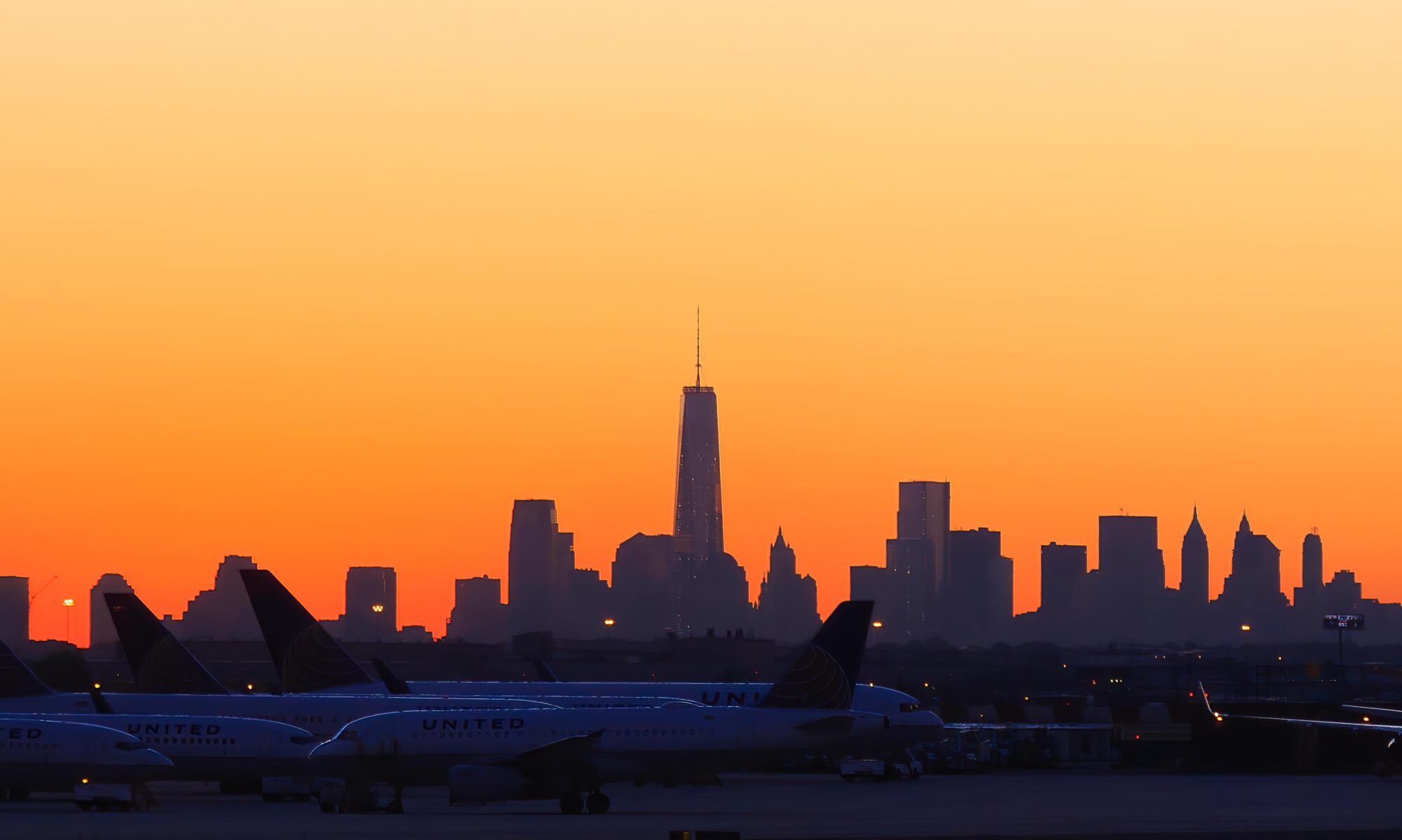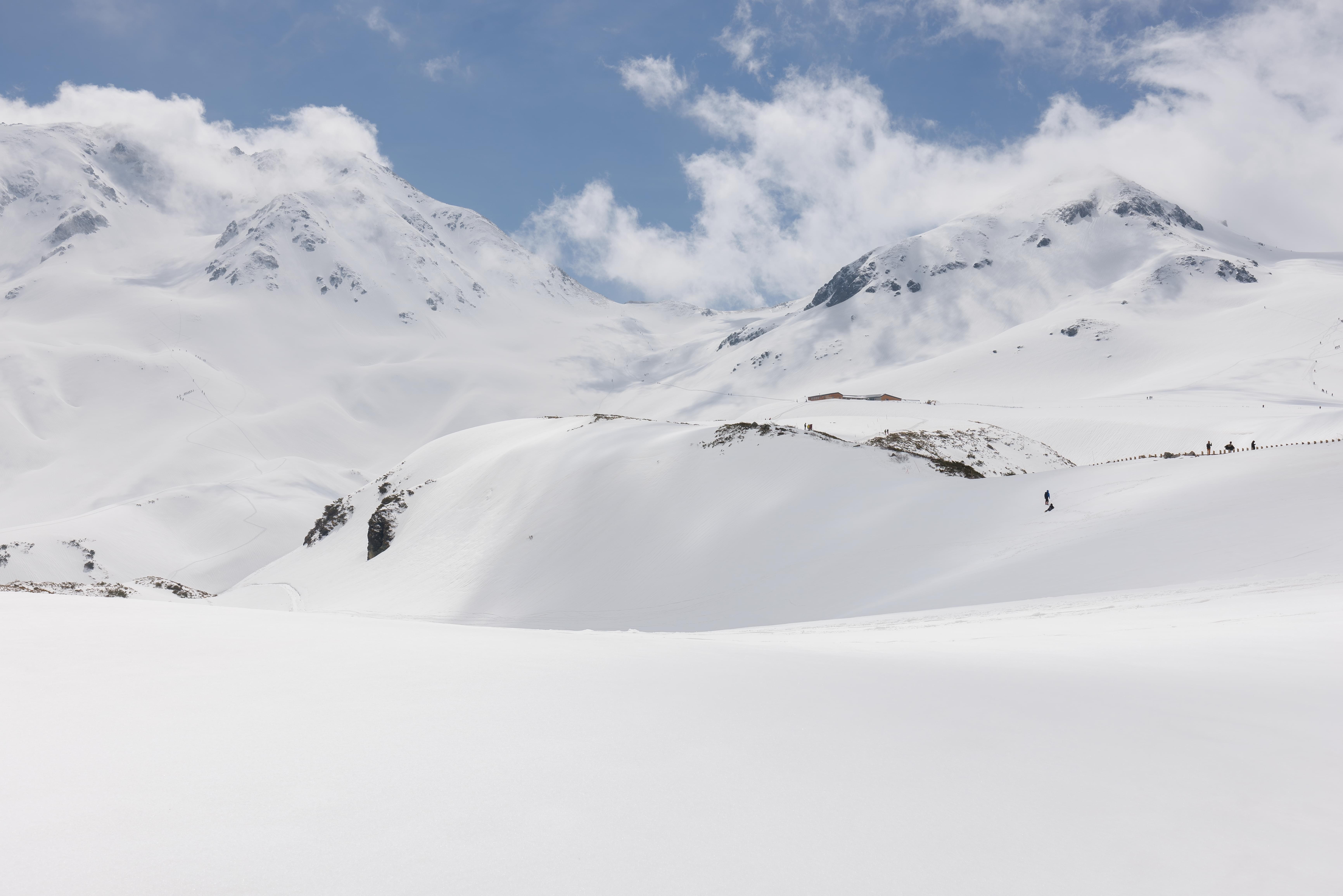After spending the night at the Hotel Tateyama at Murodo Station on the Tateyama Kurobe Alpine Route, we saw the weather improve after breakfast. We decided to check out as soon as we could put everything away to once again go hiking in the snow. We ended up hiking to the Mikurigaike Onsen, and then a bit past to the Jigokudani Observatory. Afterwards, we completed the alpine route, spending some time at the Kurobe Dam before ending the trip at Ogizawa where we caught the Alpico bus to the Shinano-Ōmachi JR station.
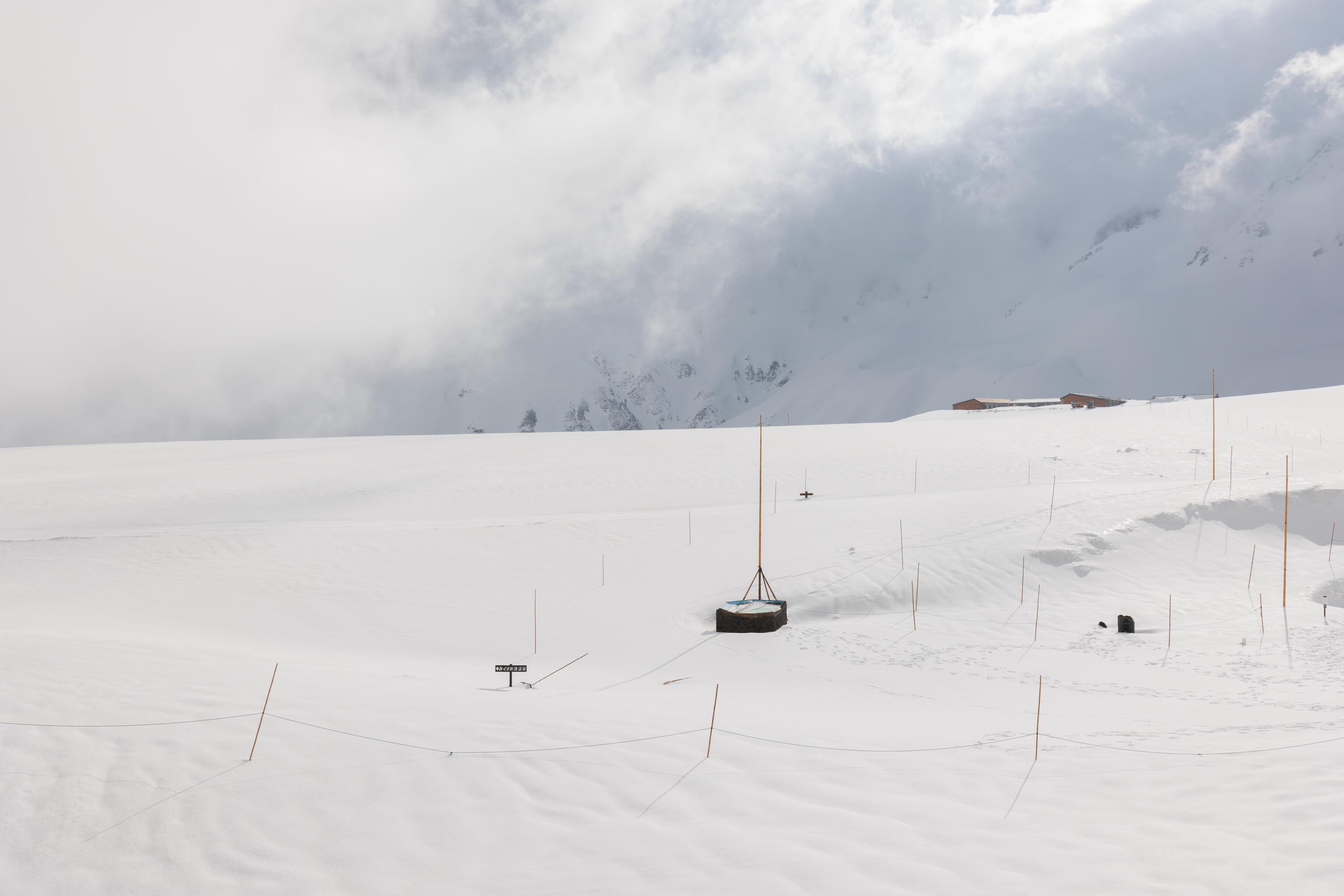
This was the view from our room in the Tateyama Hotel! Other than a brief period yesterday when we could see some of the poles, we weren’t able to see anything at all. But soon, the weather started to clear and we could even see a bit of the mountains!
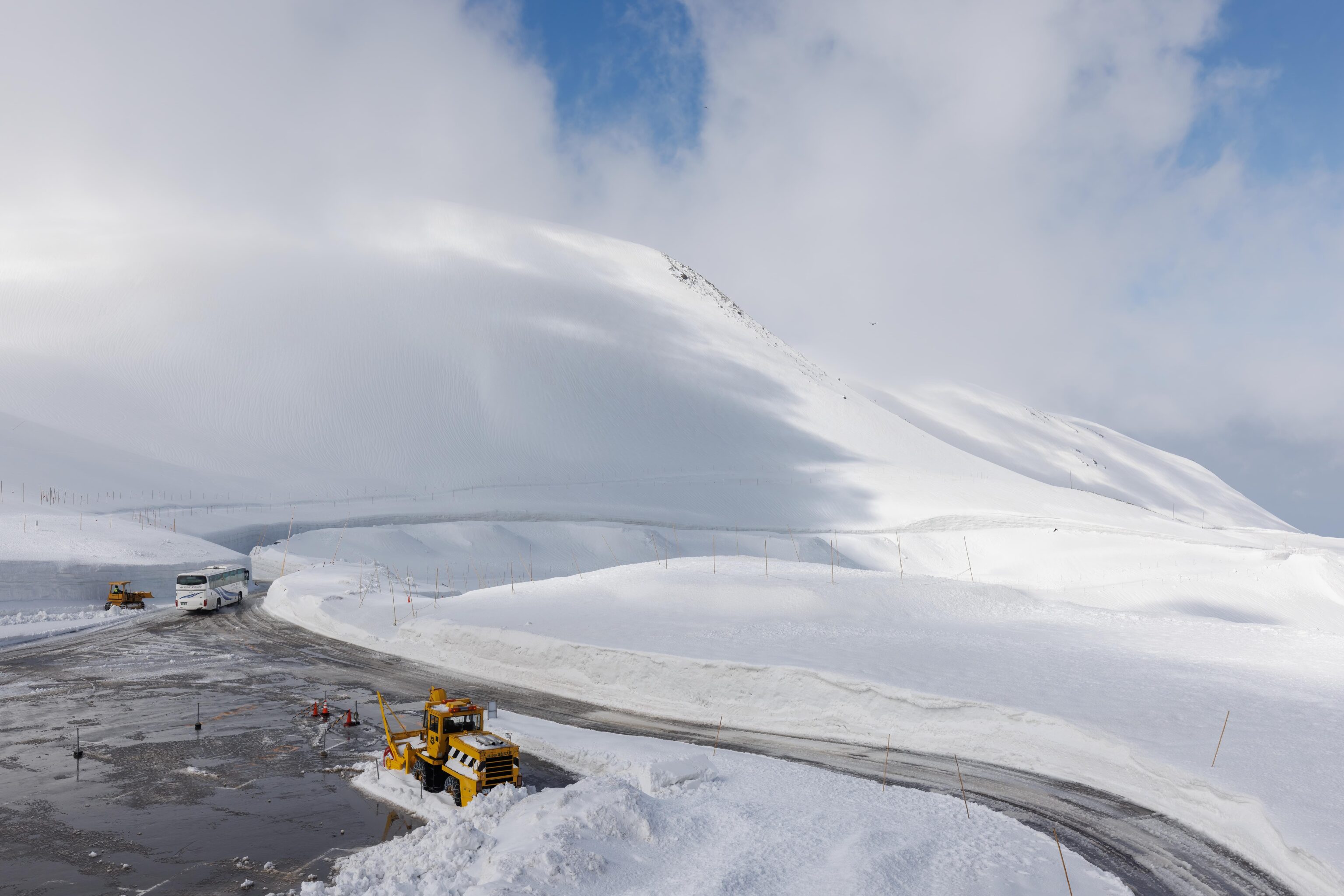
The Highland Bus had a delayed opening in the morning due to snow clearing operations. By the time we finished checking out, the bus had just started to run. We found out that the hotel actually has free snowshoes available for guests to borrow. Unfortunately, the snowshoes were pretty terrible. Particularly with traction as they were pretty ground down with heavy use and likely weren’t great even when new based on their design. But they did provide flotation above the snow.


We got a good look at the Hotel Tateyama as we started hiking, with snowshoes, towards the onsen. There was a layer of fresh snow on the ground from yesterday afternoon and overnight. But, it was already becoming slushy in the warm temperatures and hot sun.
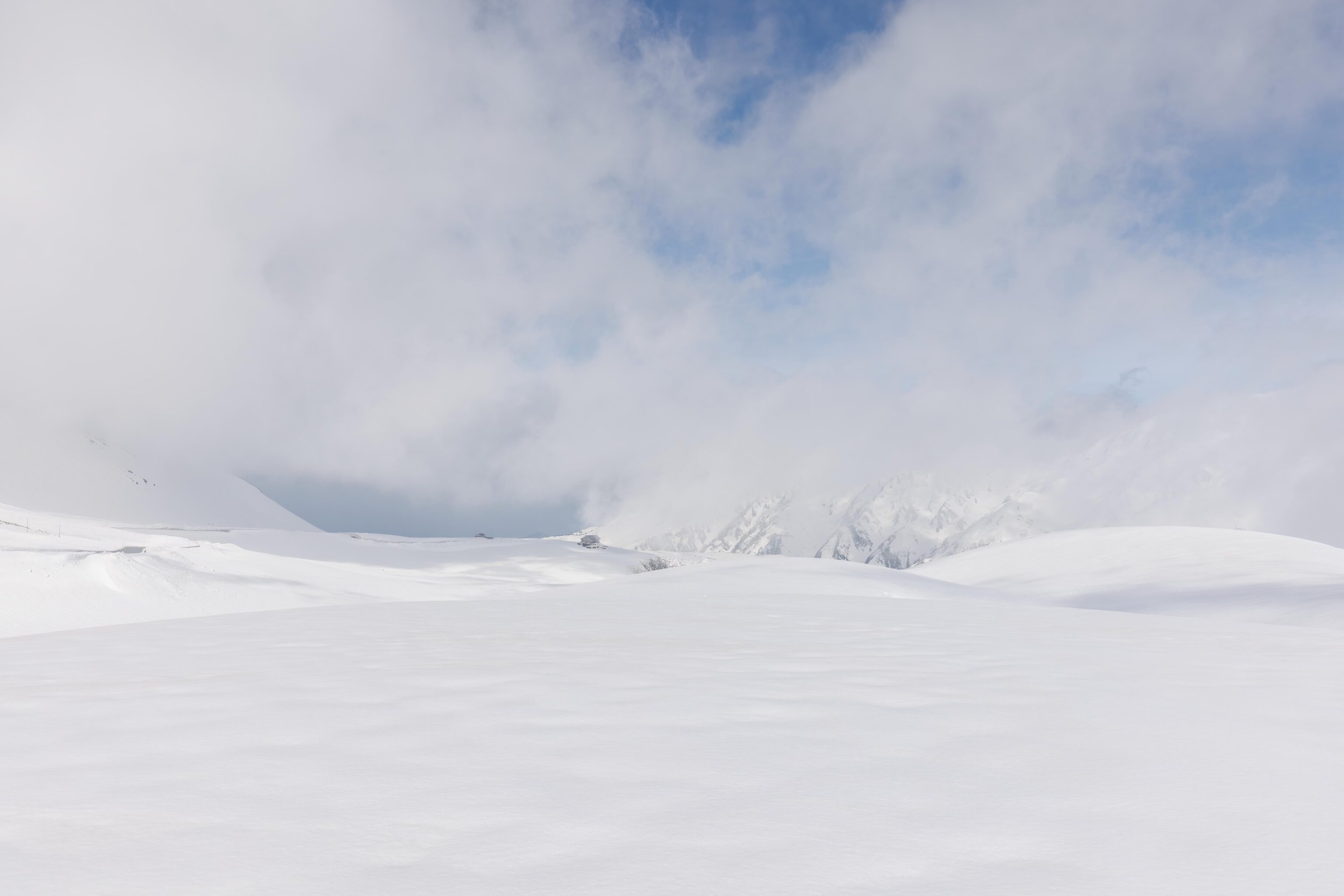
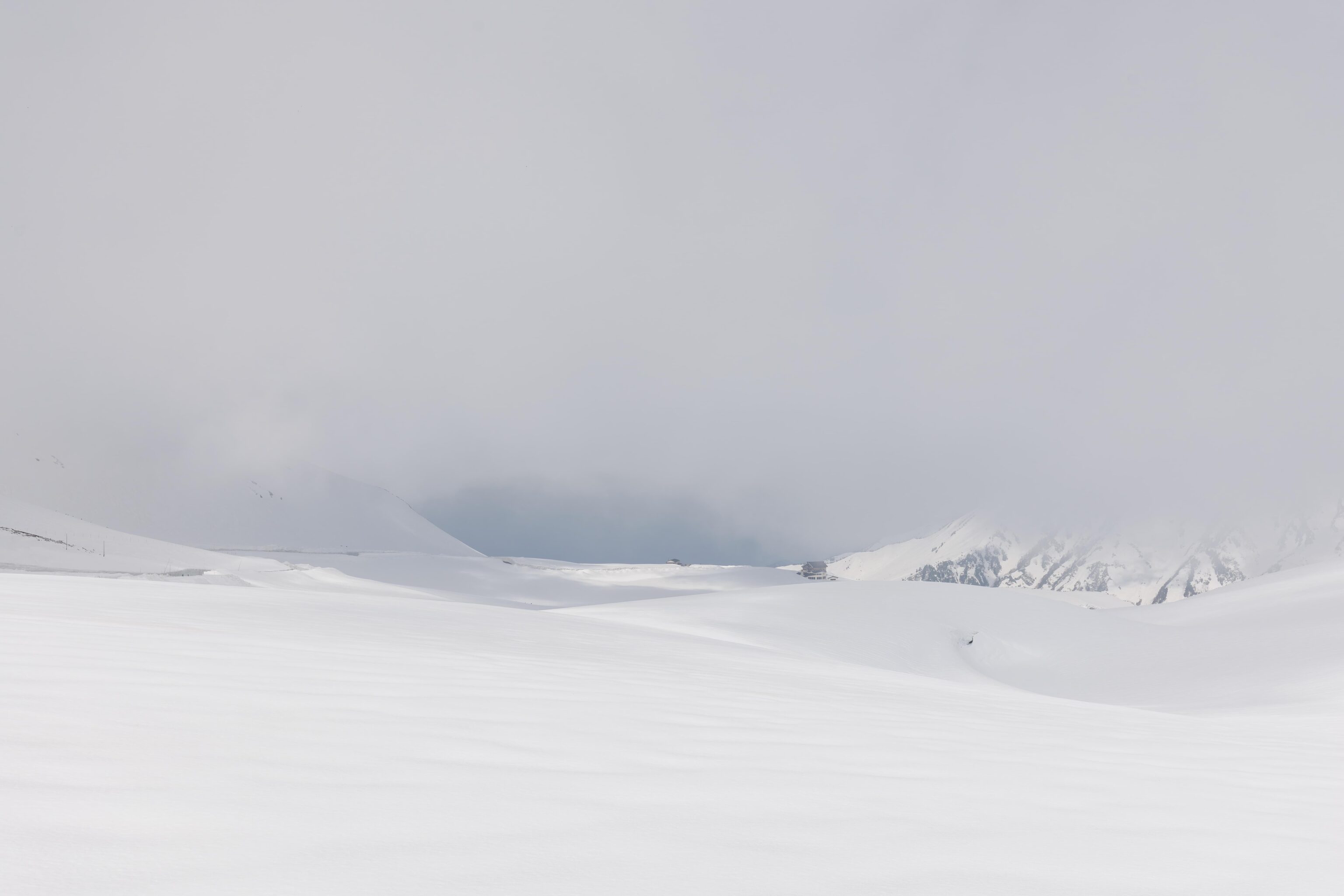
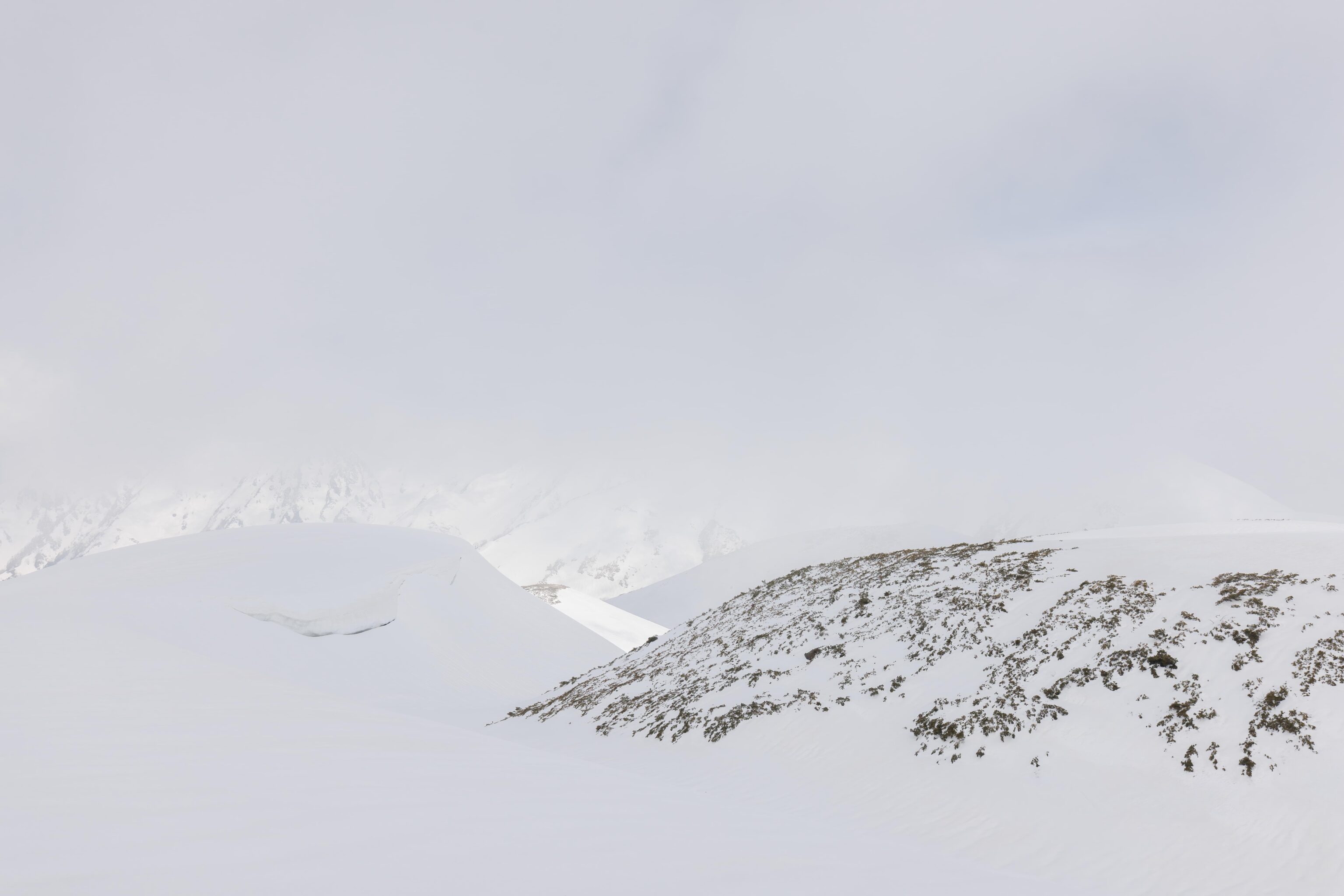
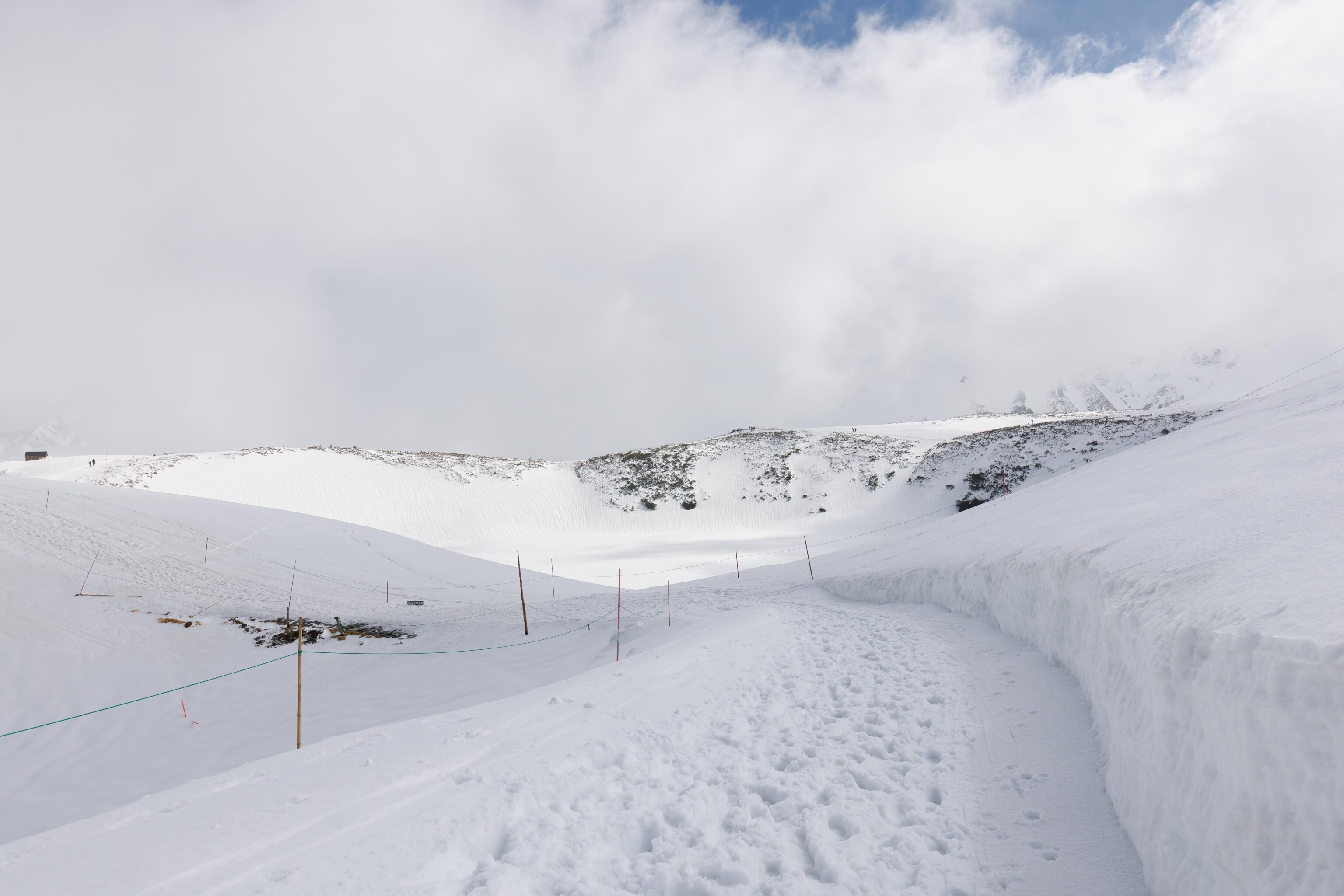
The cloud cover moved pretty quickly. At times, visibility was limited but it would quickly clear up. We had to walk slowly in the steeper downhill sections as our snowshoes offered minimal traction, particularly on the slushy snow.
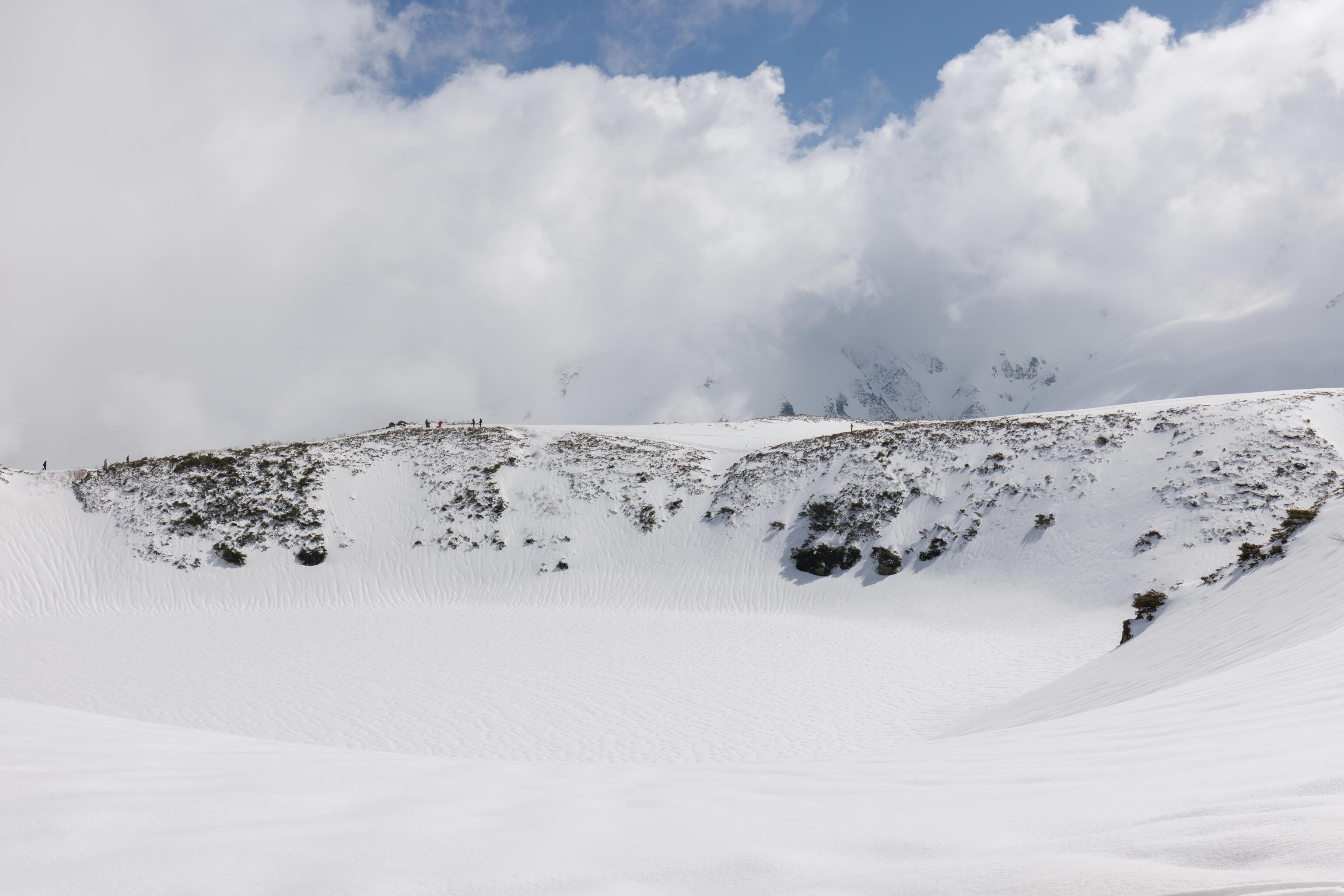
We soon walked by the snow covered Mikuriga-ike. We could see people on the opposite side where we had hiked to yesterday afternoon before ultimately turning back.
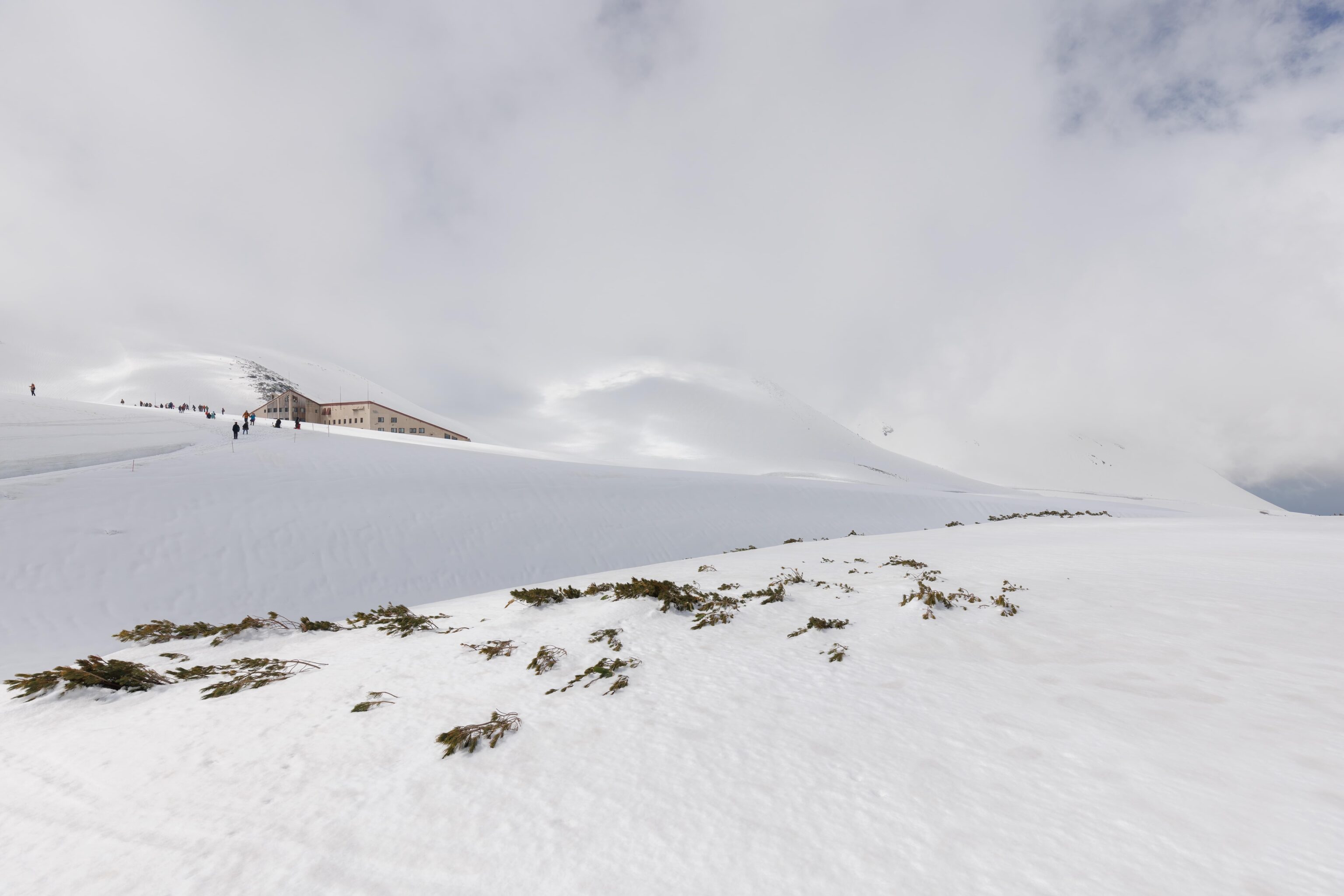
Looking back, we could still clearly see the Hotel Tateyama as well as the many people nearby. There weren’t as many people on the trail.
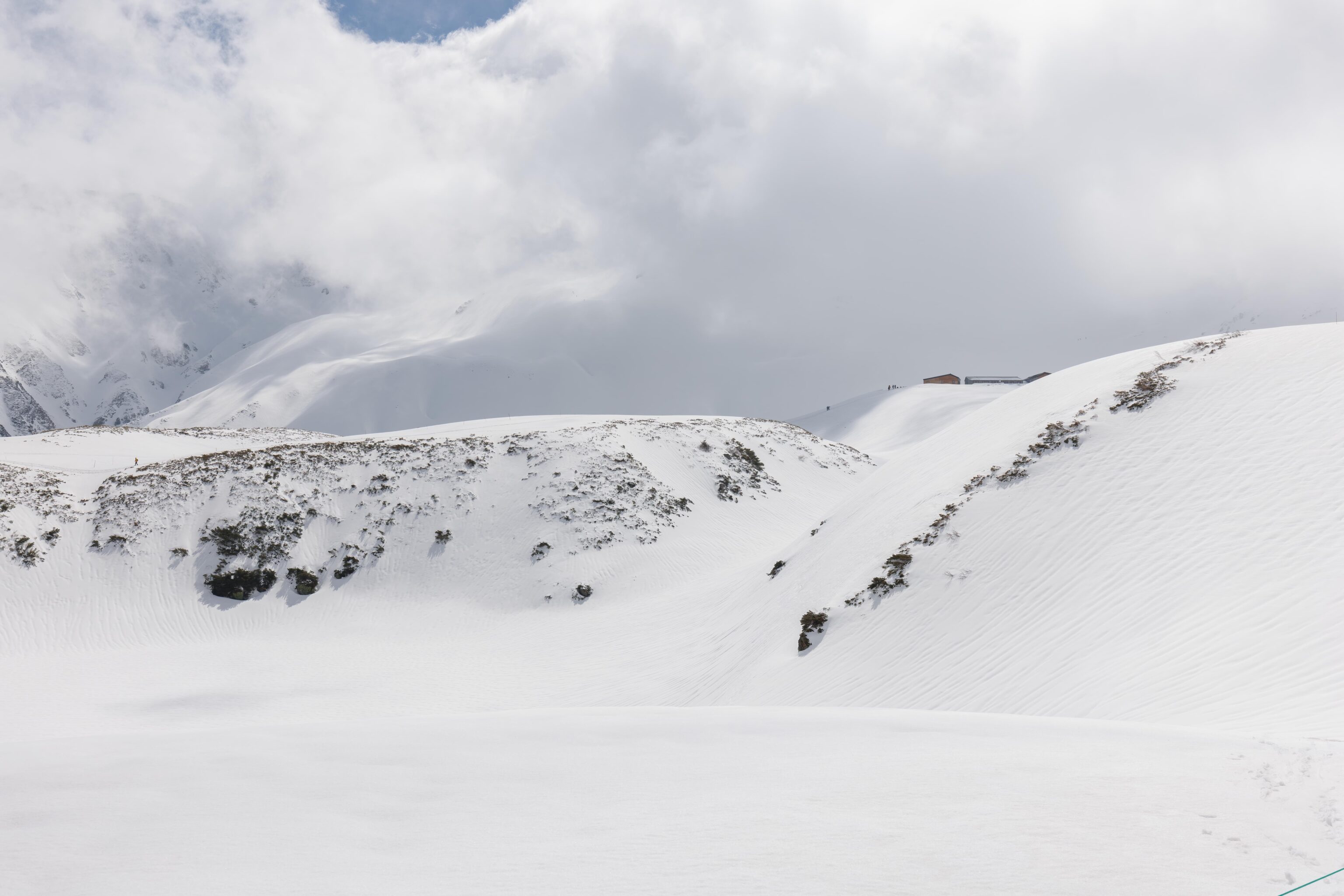
As we continued past the pond, we could see Tateyama Murodou Sanso up at a slightly higher elevation.
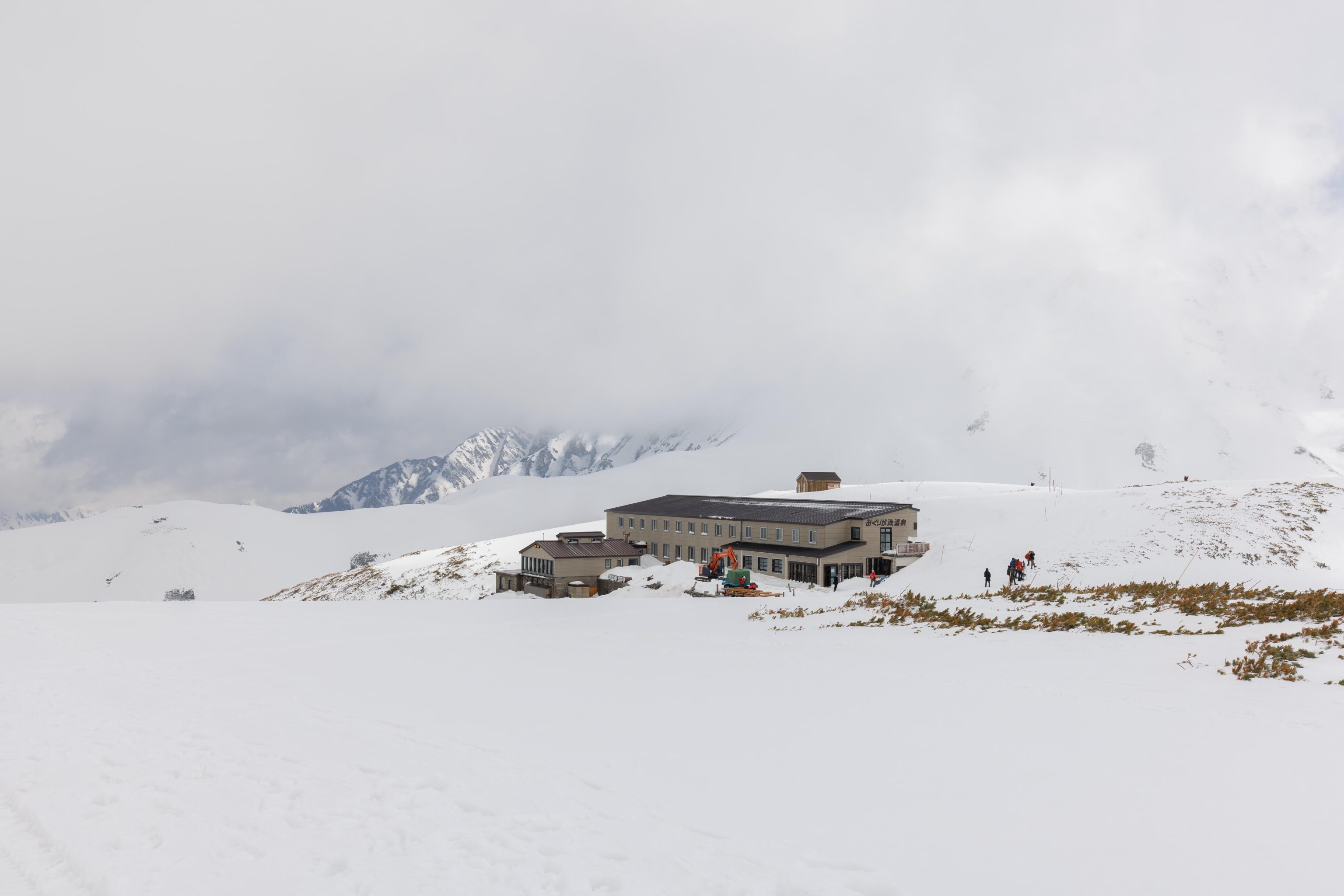
Soon, the onsen came into view.
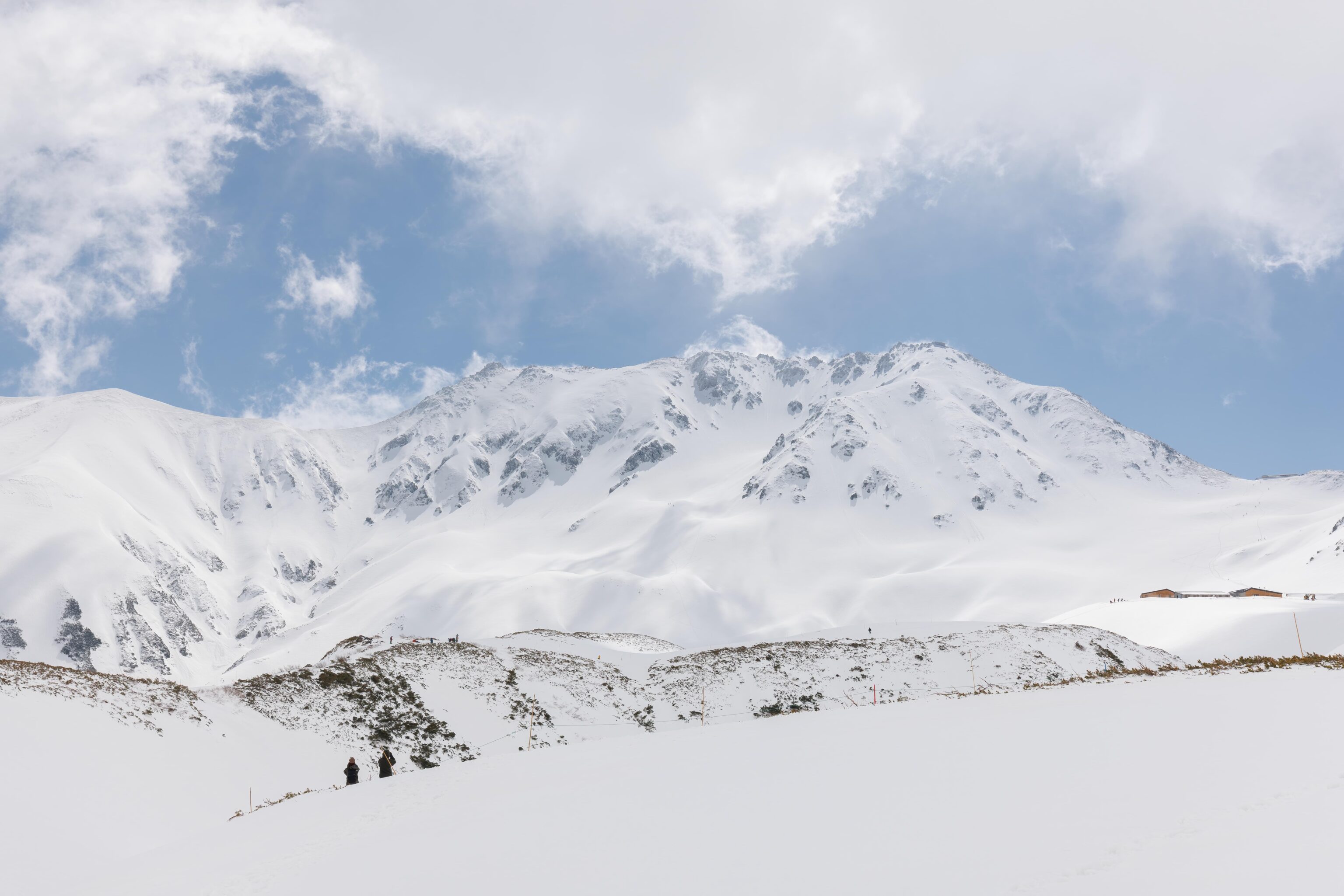
The clouds never completely parted, but we did get a great view of the mountains. The wide rocky mountain is Tateyama, or Mount Tate. It consists of three peaks. The rightmost peak has a structure atop it. It is a shrine atop Mt. Oyama. A previous shrine was removed, repaired, and currently resides above the observation deck level in Murodo Station. The remaining peaks are O-nanji-yama and Fuji-no-oritate. Tateyama is considered one of the three holy mountains of Japan, along with the famous Mt. Fuji and the less internationally known Mount Haku, which is more or less 75 miles away from here.
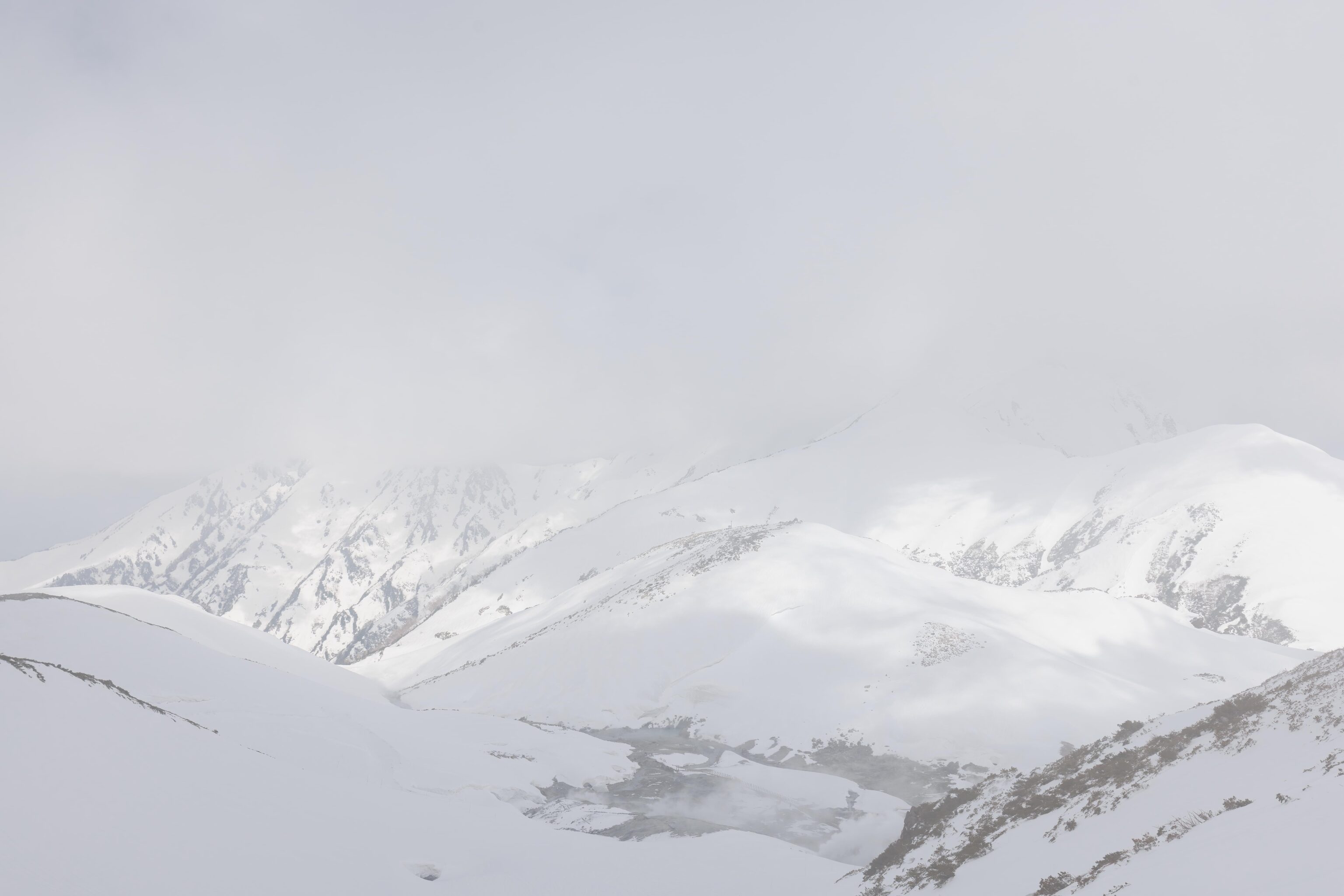
It got cloudy again as we came to the view of the Jigokudani below us. After this point, I continued onward while the Mrs. enjoyed Mikurigaike Onsen, the highest elevation onsen in Japan.
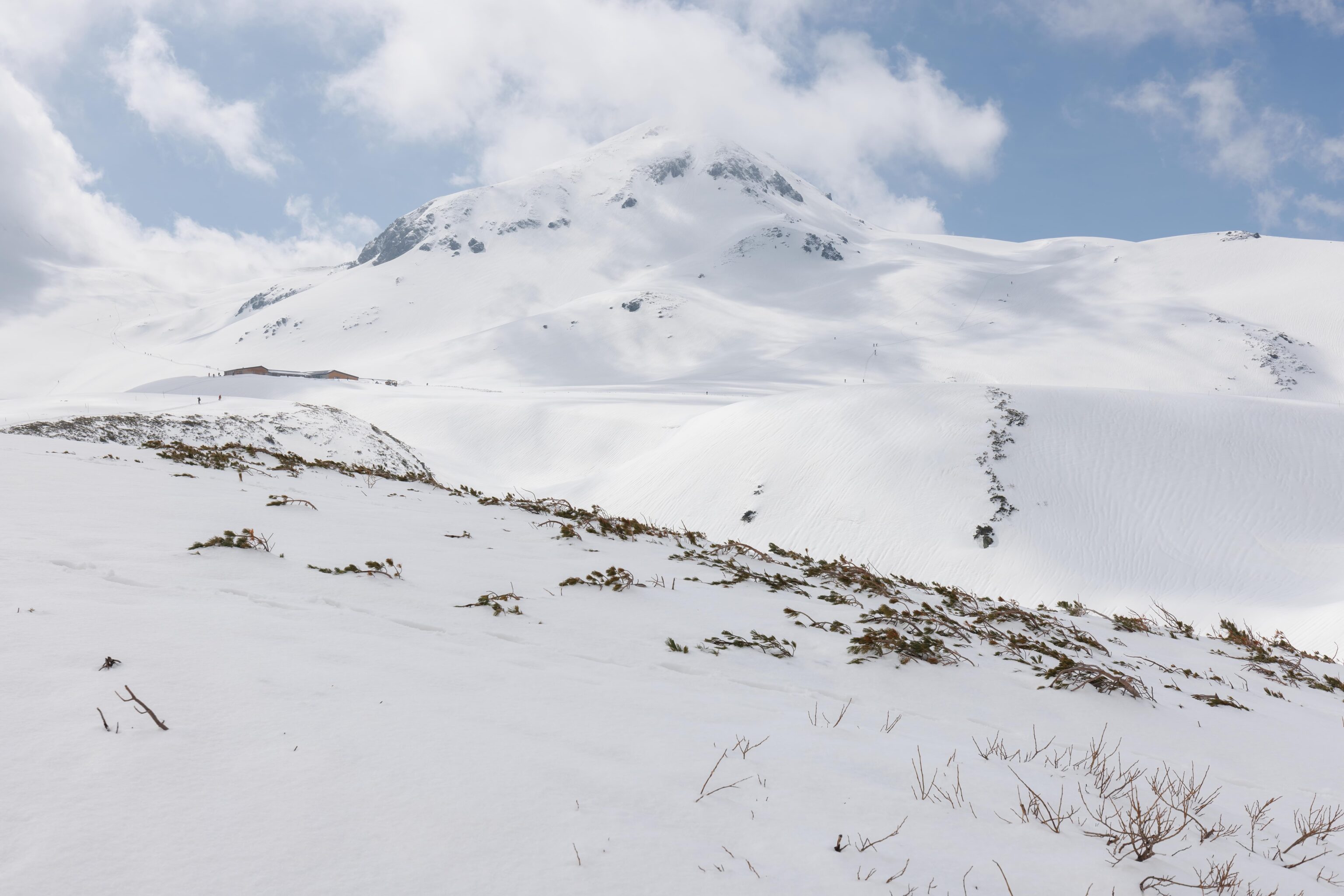
We saw many skiers and snowboarders both yesterday and today. Many were climbing near this mountain and skiing or boarding down. This mountain might be Mt. Jodo?
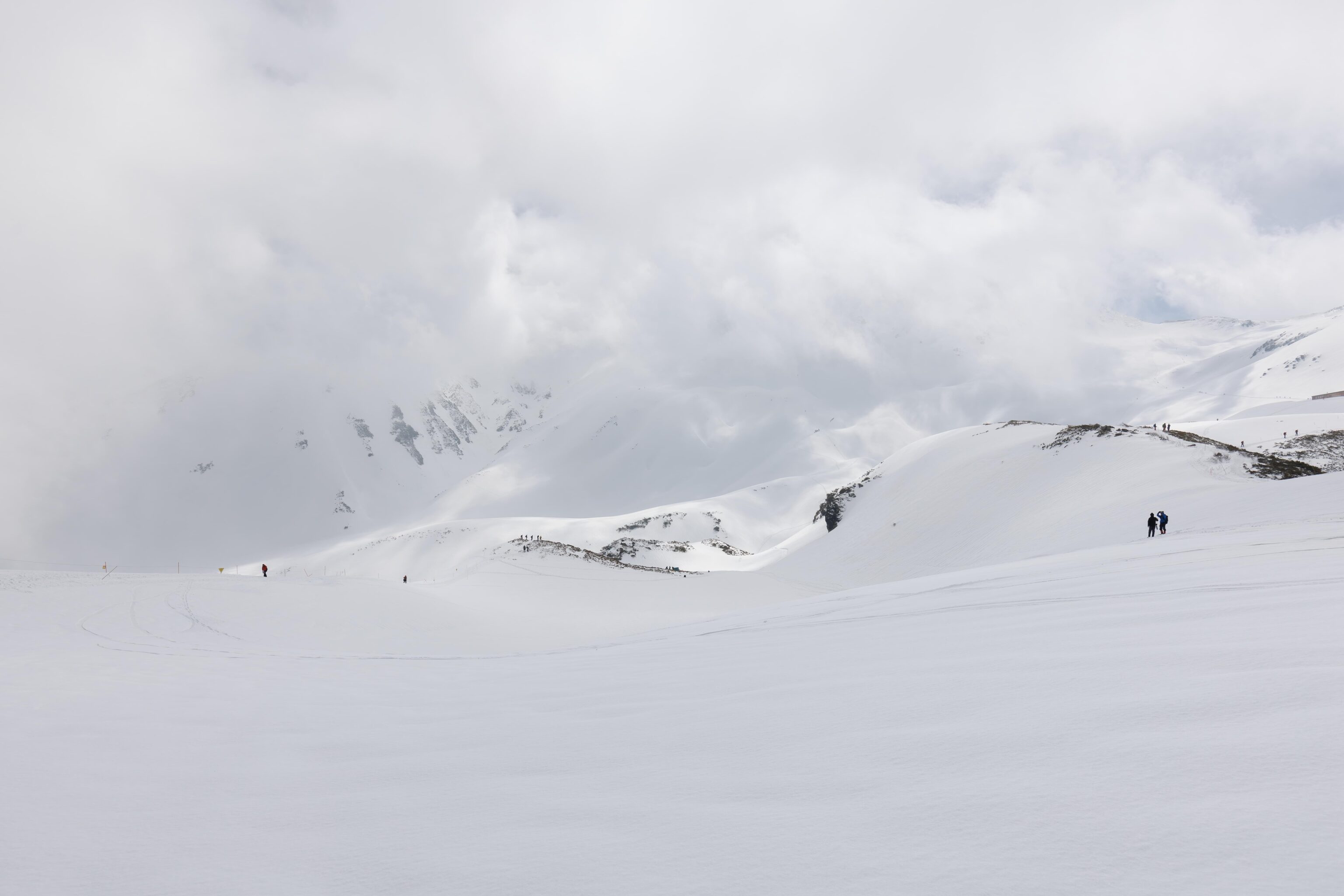
There was a wide expanse of snow here in the area above the onsen!

I quickly reached the Jigokudani observation platform, or Enmadai. It was somewhat clear of snow, likely its location results in the snow blowing away. I took a panorama of the Jigokudani below me. There was quite a bit of steam coming from the visible thermal features as well as what appeared to be a thermal stream. The Jigokudani seems like it might be a relative high spot with thermal flows in opposite directions. This water is used for the Mikurigaike Onsen above. The spring water from this location is also used as drinking water for the hotels during the winter season as it is the only source of flowing water. During the summer, there is some another spring water source that is used.
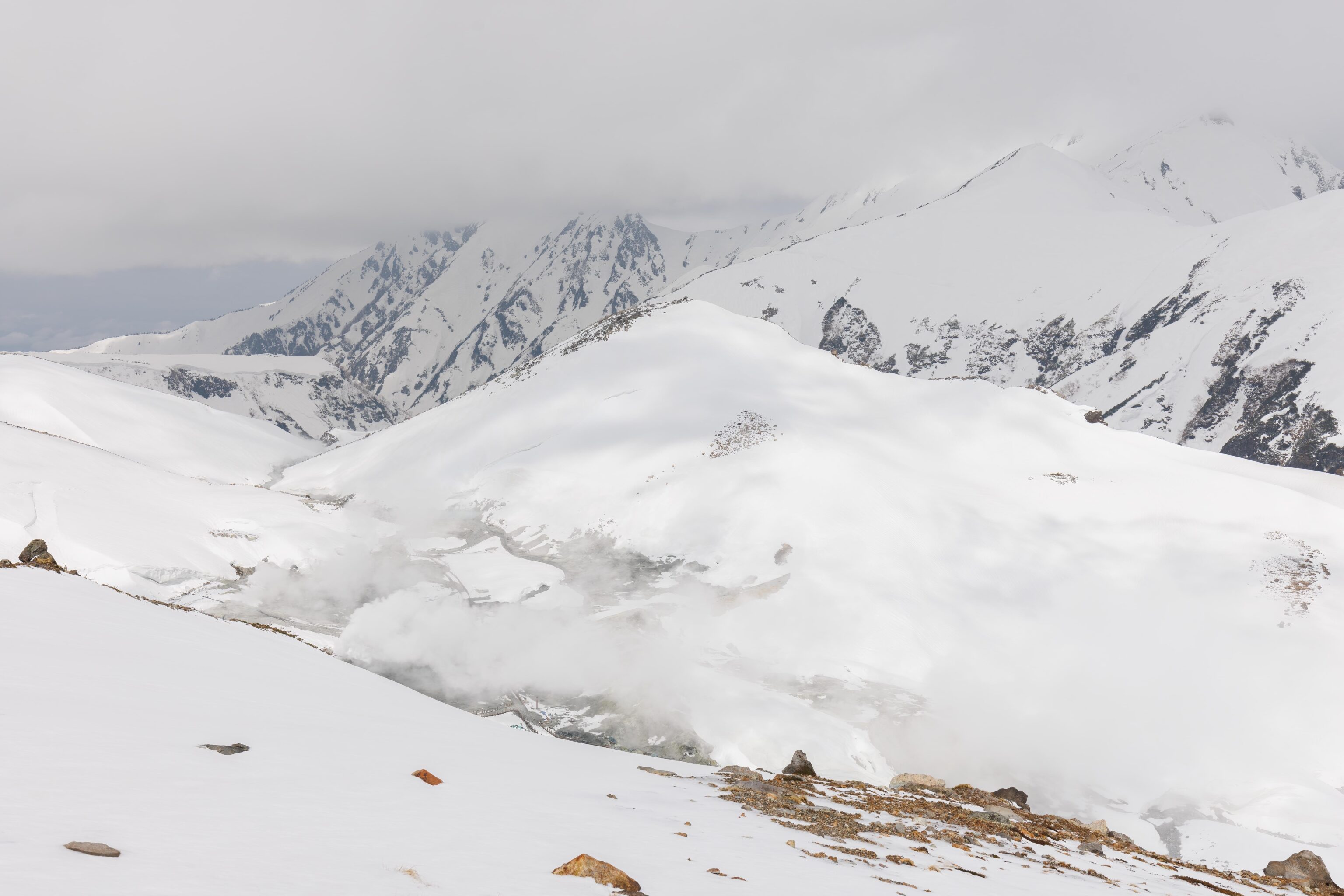
A regular sized photograph of the Jigokudani below.
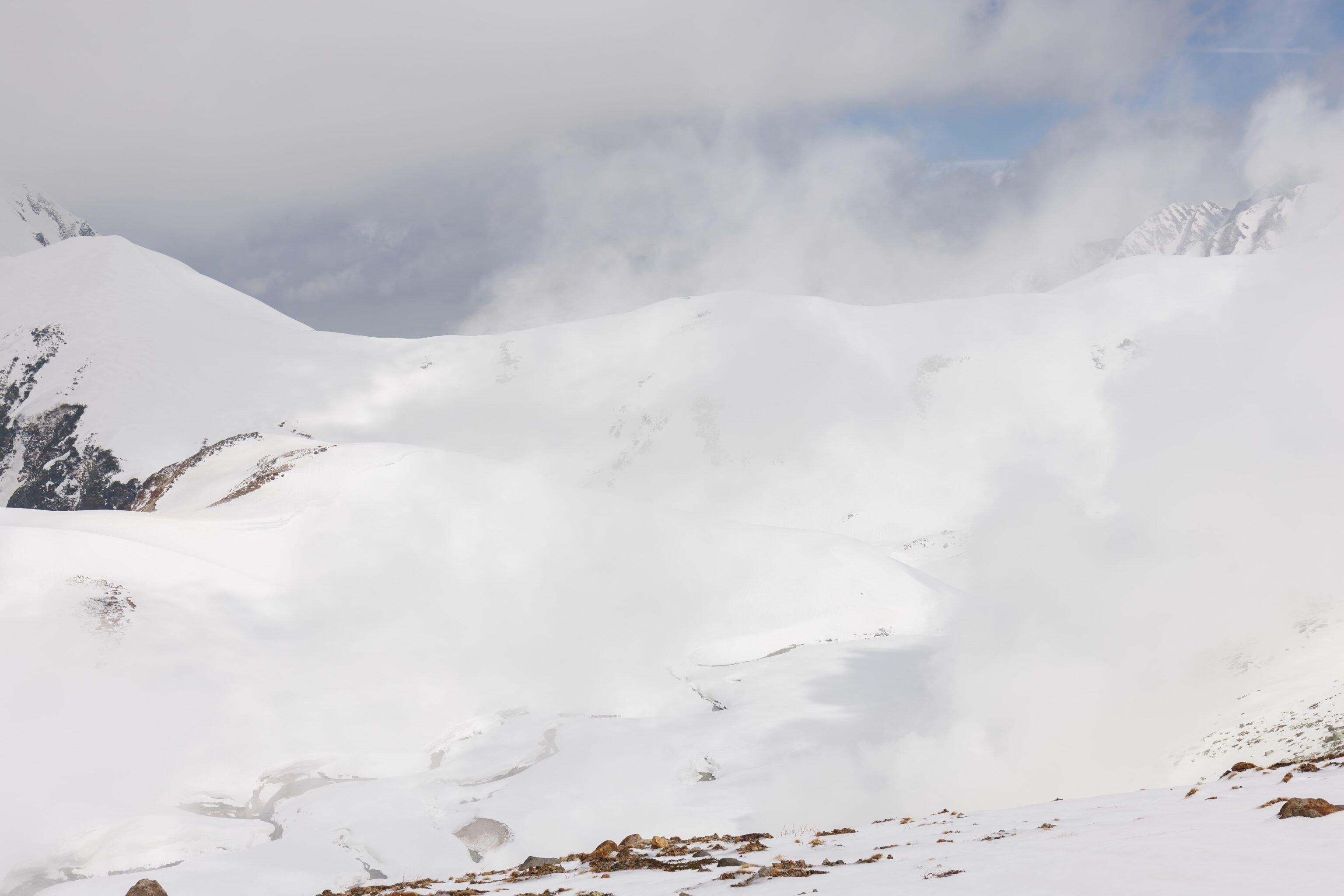
And a regular sized photograph of the thermal stream leading away. Visually, it looks a bit like the water is running downhill from right to left. But OpenStreetMap data shows it runs downhill left to right, away from the Jigokudani.
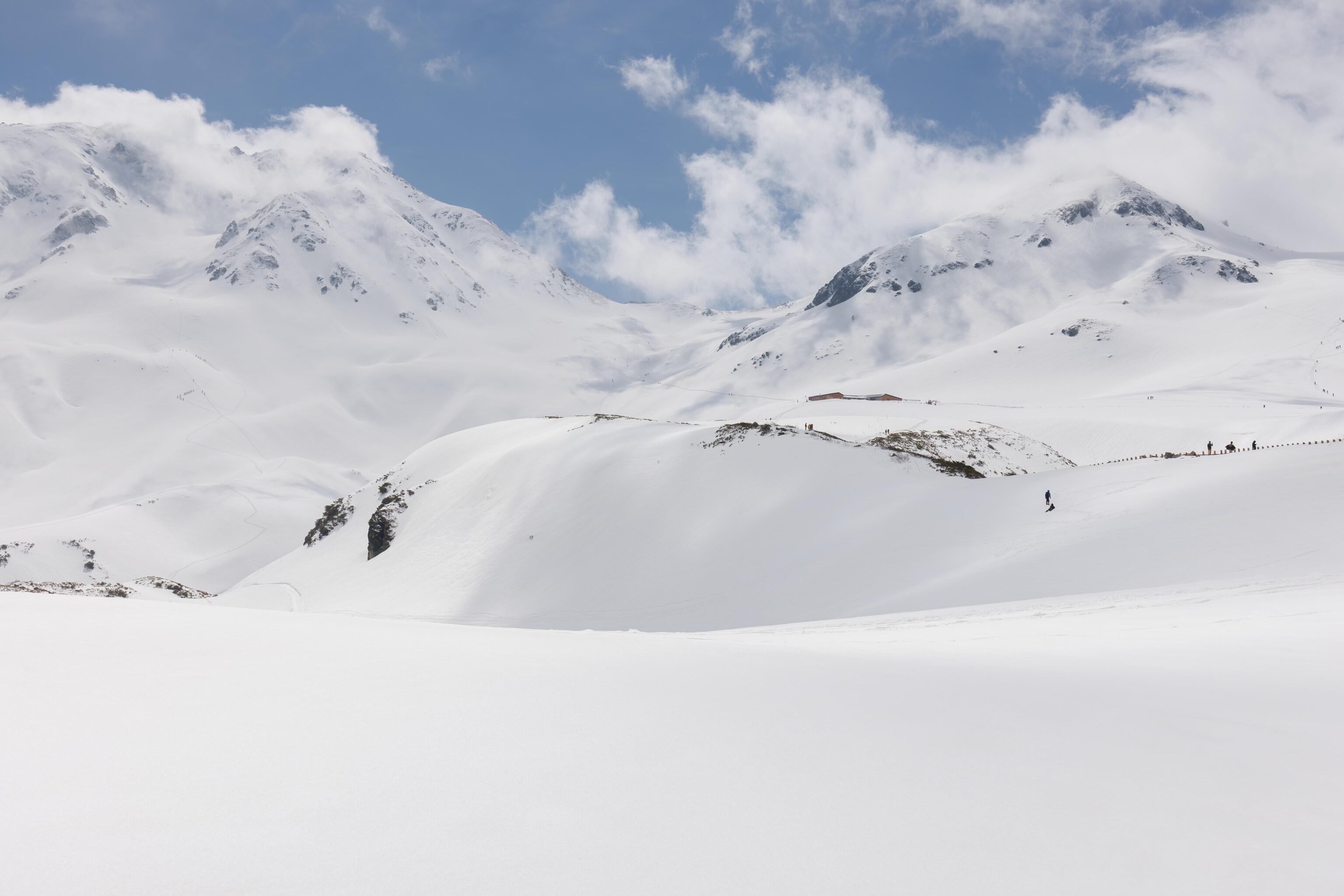
A beautiful scene with untouched snow in front of me and tall peaks in the background. Tateyama is on the left. Mt. Jodo is possibly to the right.
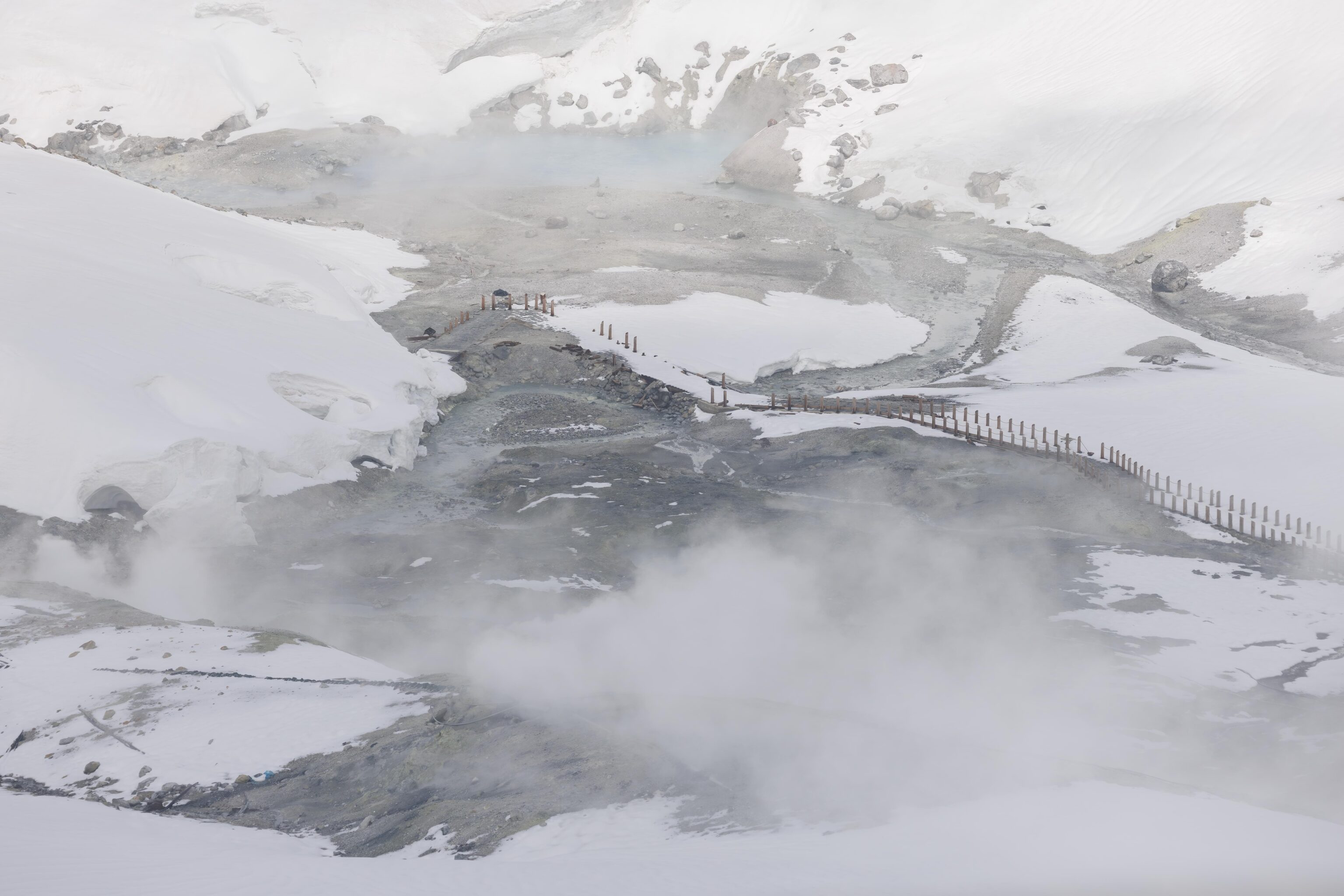
Upon returning to the onsen, there was a clear view of the Jigokudani. Or, as clear as the steam allowed! The stone and wood pathways previously used for tourists are visible.
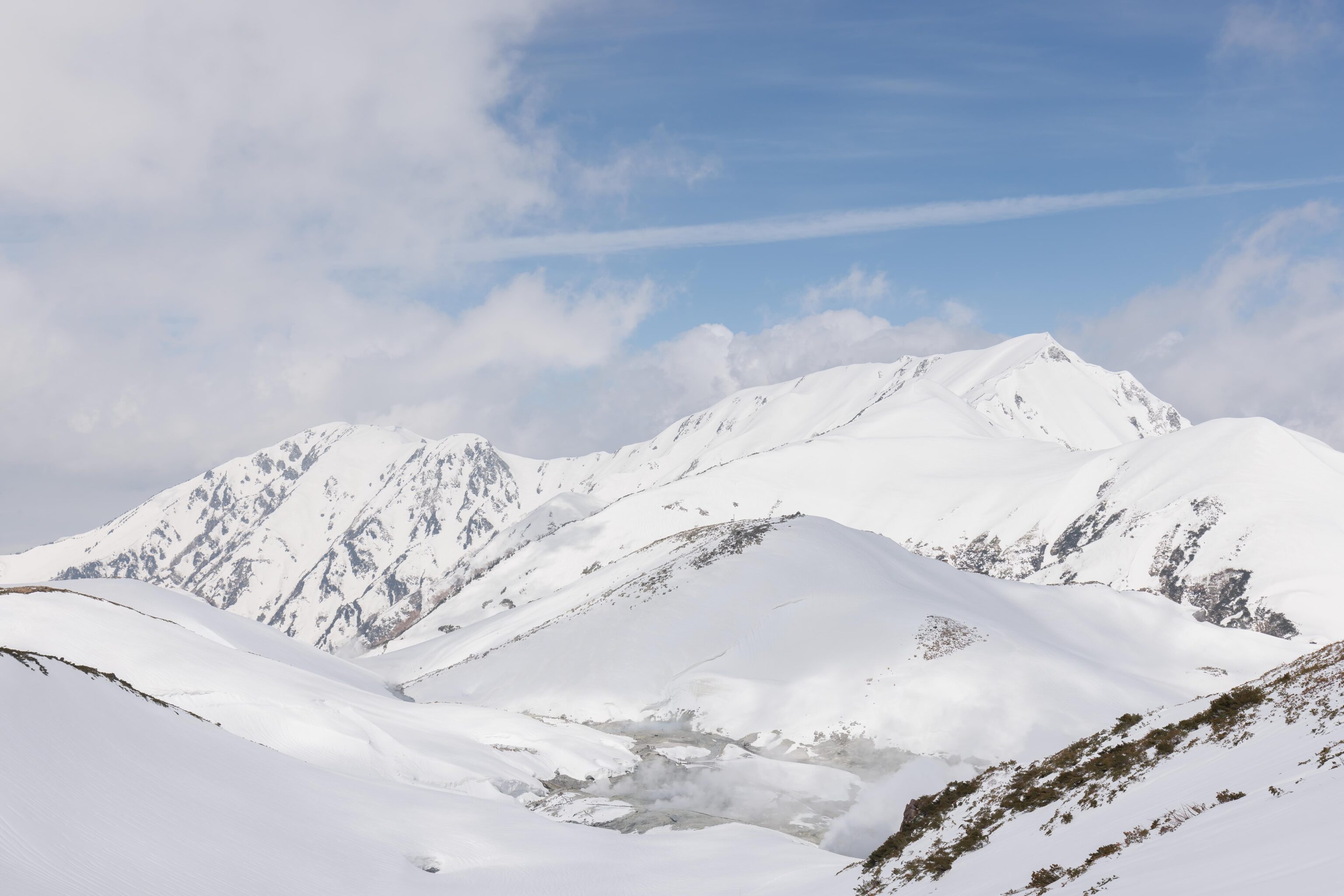
A wider view showing the Jigokudani below and mountains behind it.
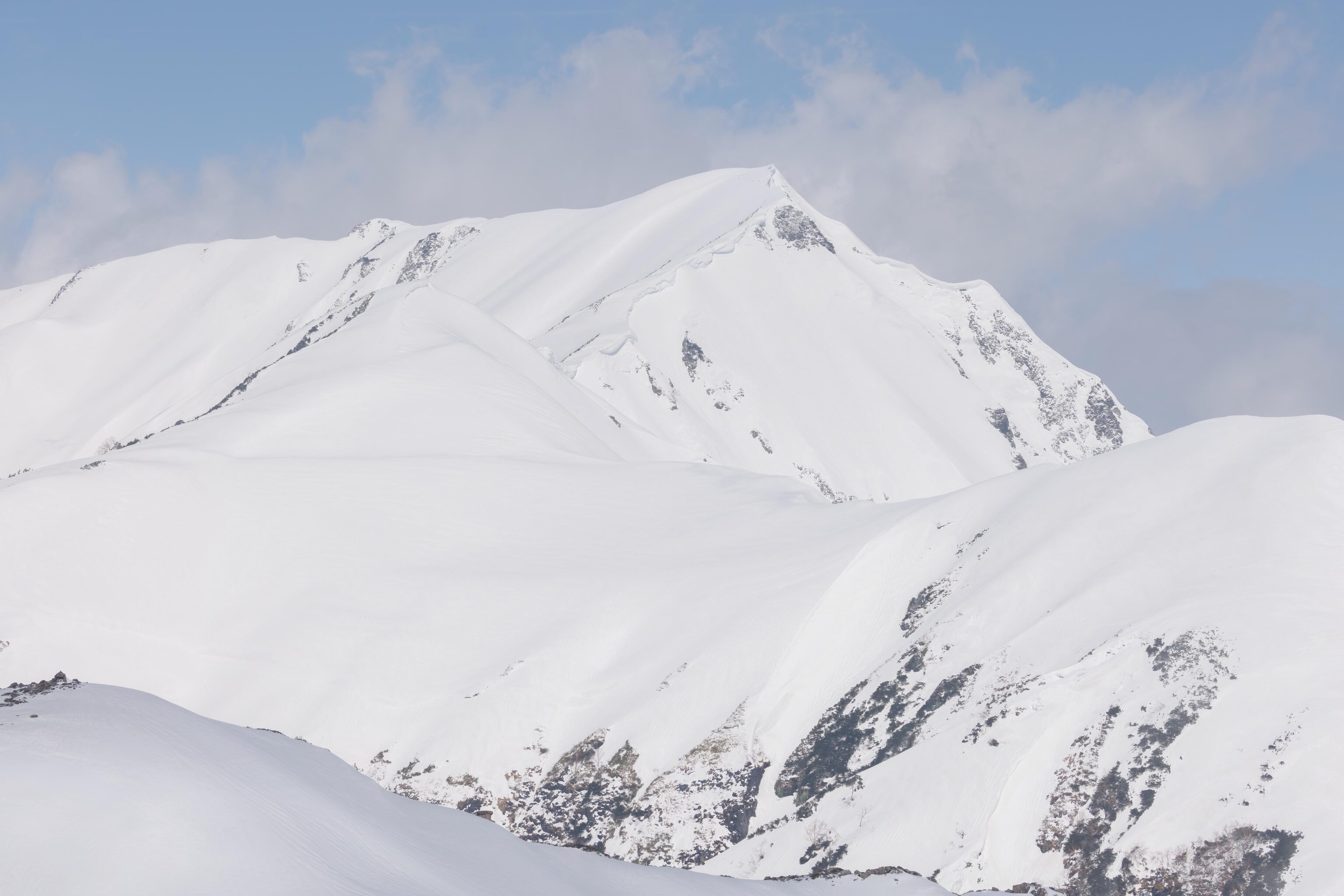
The tallest peak behind Jigokudani, probably Oku-dainichi-dake. We saw snow vigorously blowing from its summit yesterday afternoon during the brief period we could see it clearly. Today, the weather was much calmer.
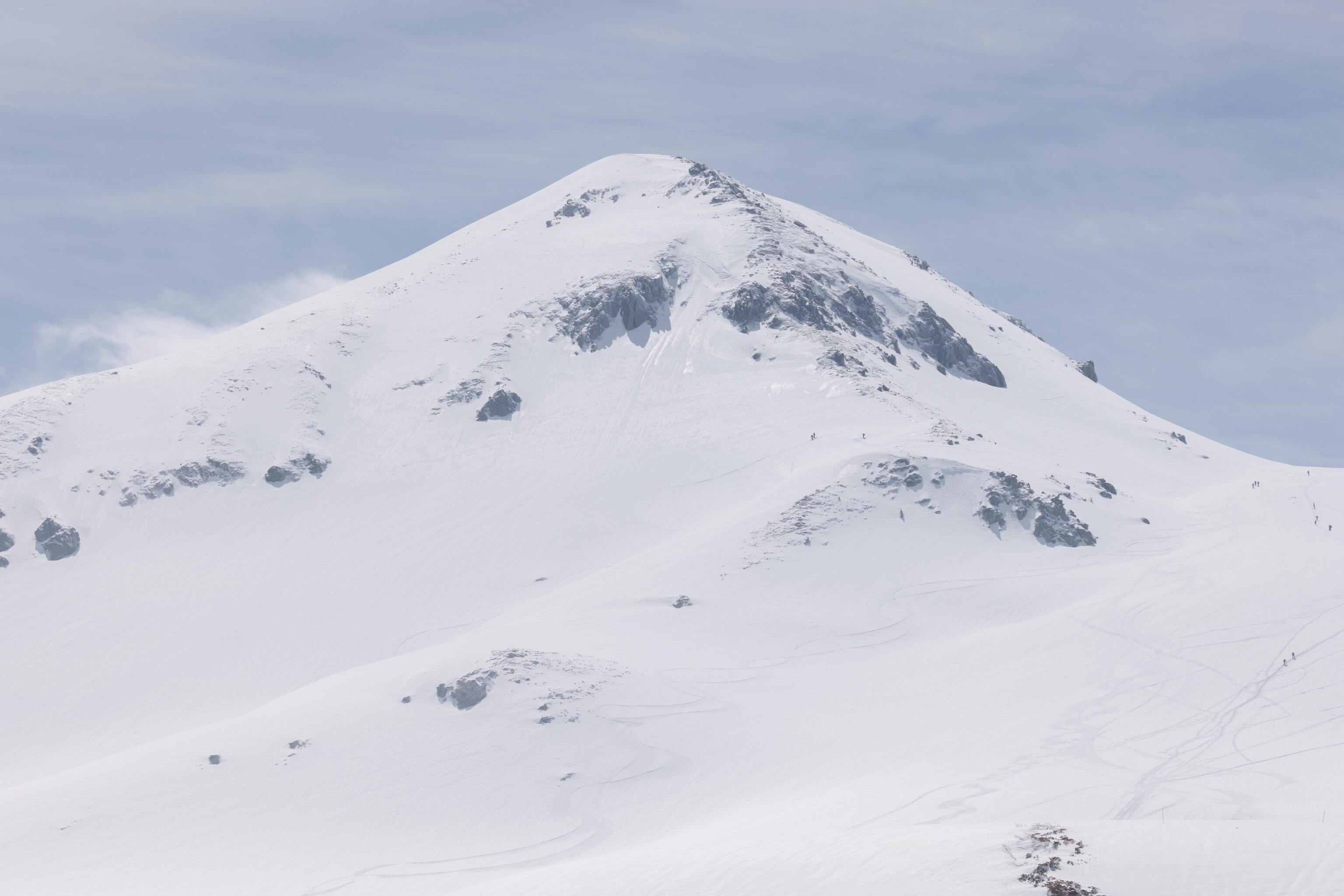
The likely Mt. Jodo, during a time when its peak was completely clear of clouds! Looking closely, there seems to be one person going for the summit while many others are half-way up the mountain.
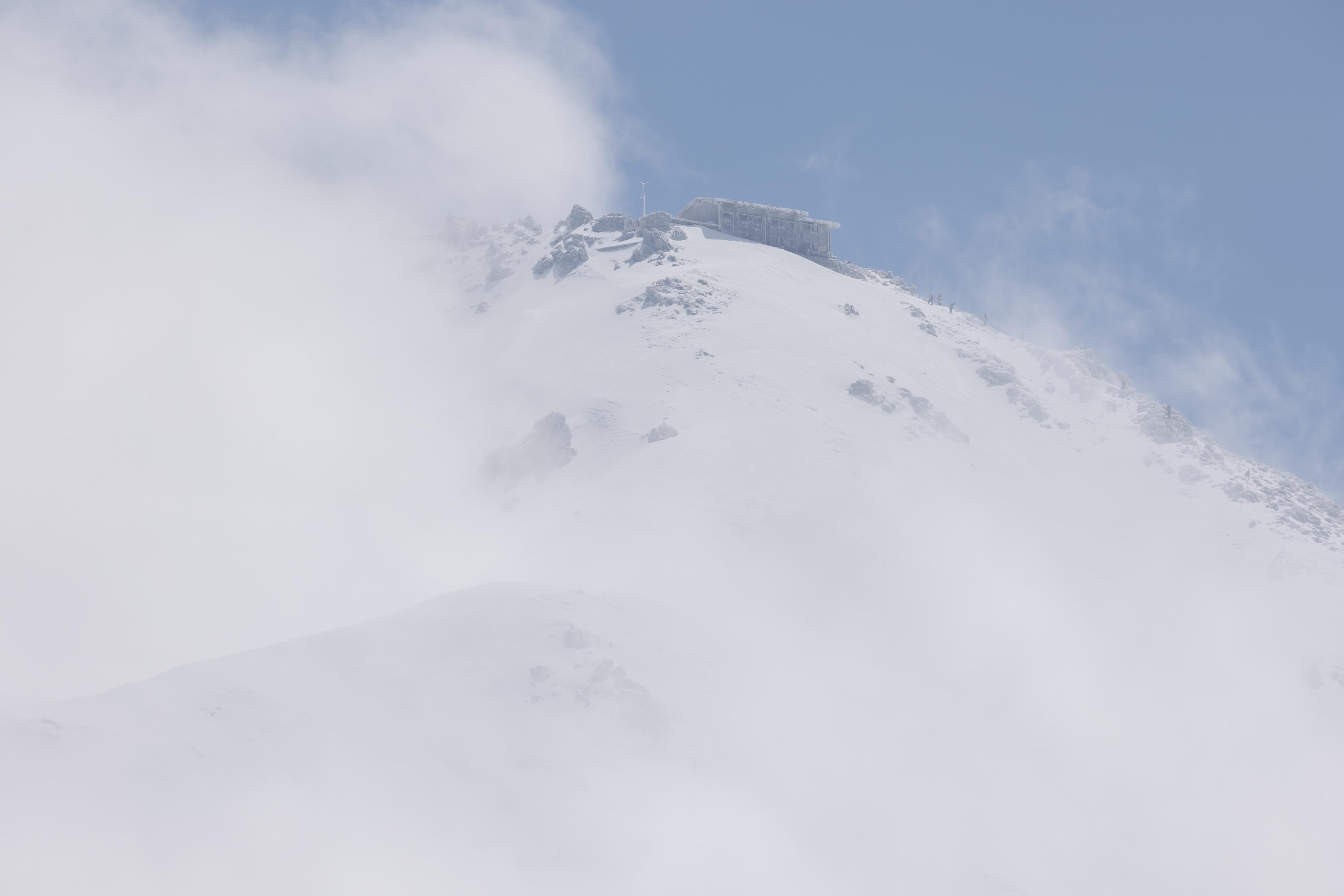
Mt. Oyama, the rightmost peak of Tateyama and the one with a shrine atop. The shrine looks very icy! There is a group of eight about to reach the summit! They seem to be mostly snowboarders but one or two might be carrying skis.
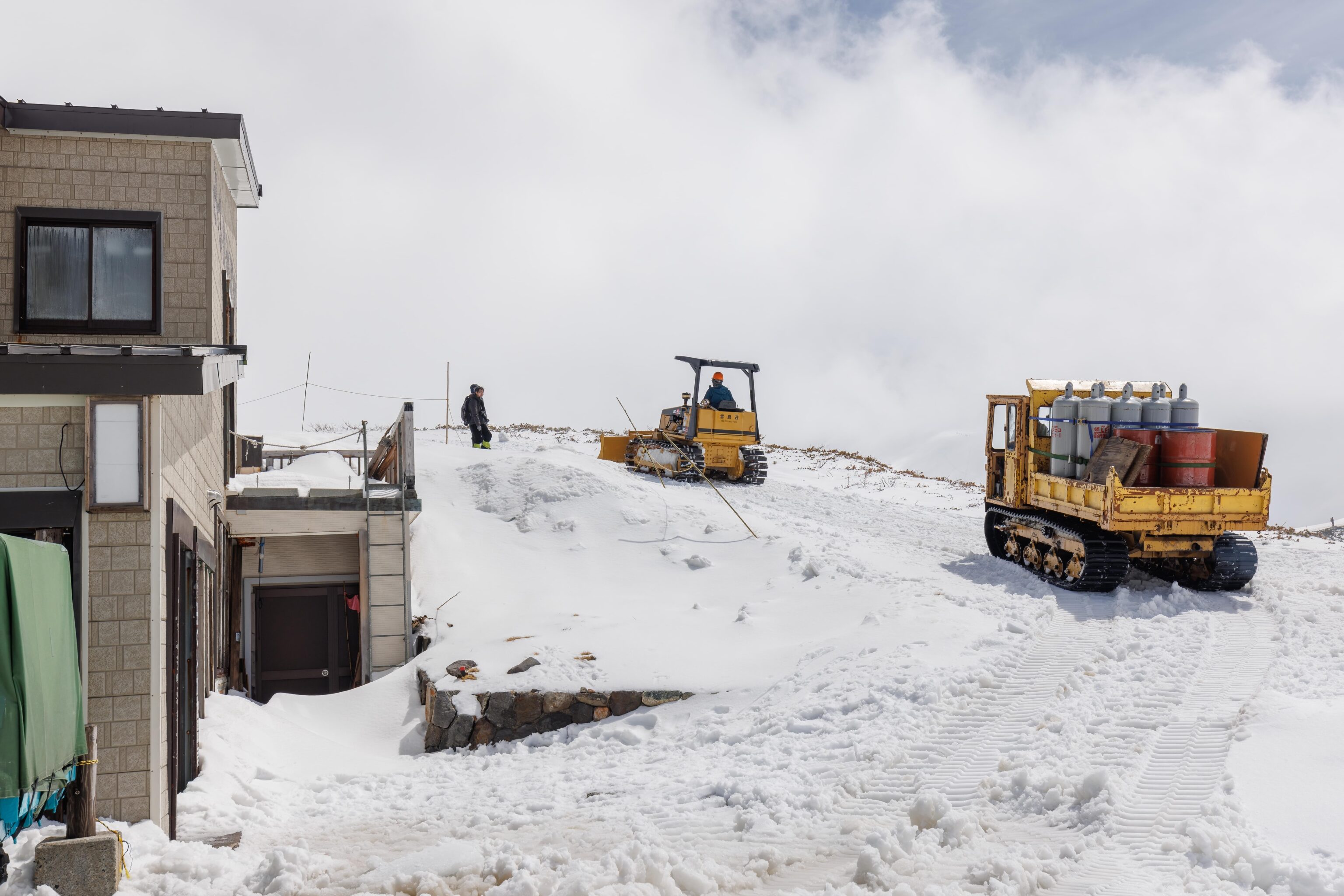
We watched this two vehicle convoy with amusement as the tracked cargo vehicle got stuck on a steep slope while carrying liquid propane. It tried to get up but its treads couldn’t get traction on the slick and slushy snow. The guy in the bulldozer leading the way eventually realizes the cargo carrier is no longer behind him.
So the driver gets out, with a shovel, and tries to move some snow around to get better traction. That didn’t help at all. Eventually, he got a tow line, backed the bulldozer back down, and pulled the cargo carrier up the slope.
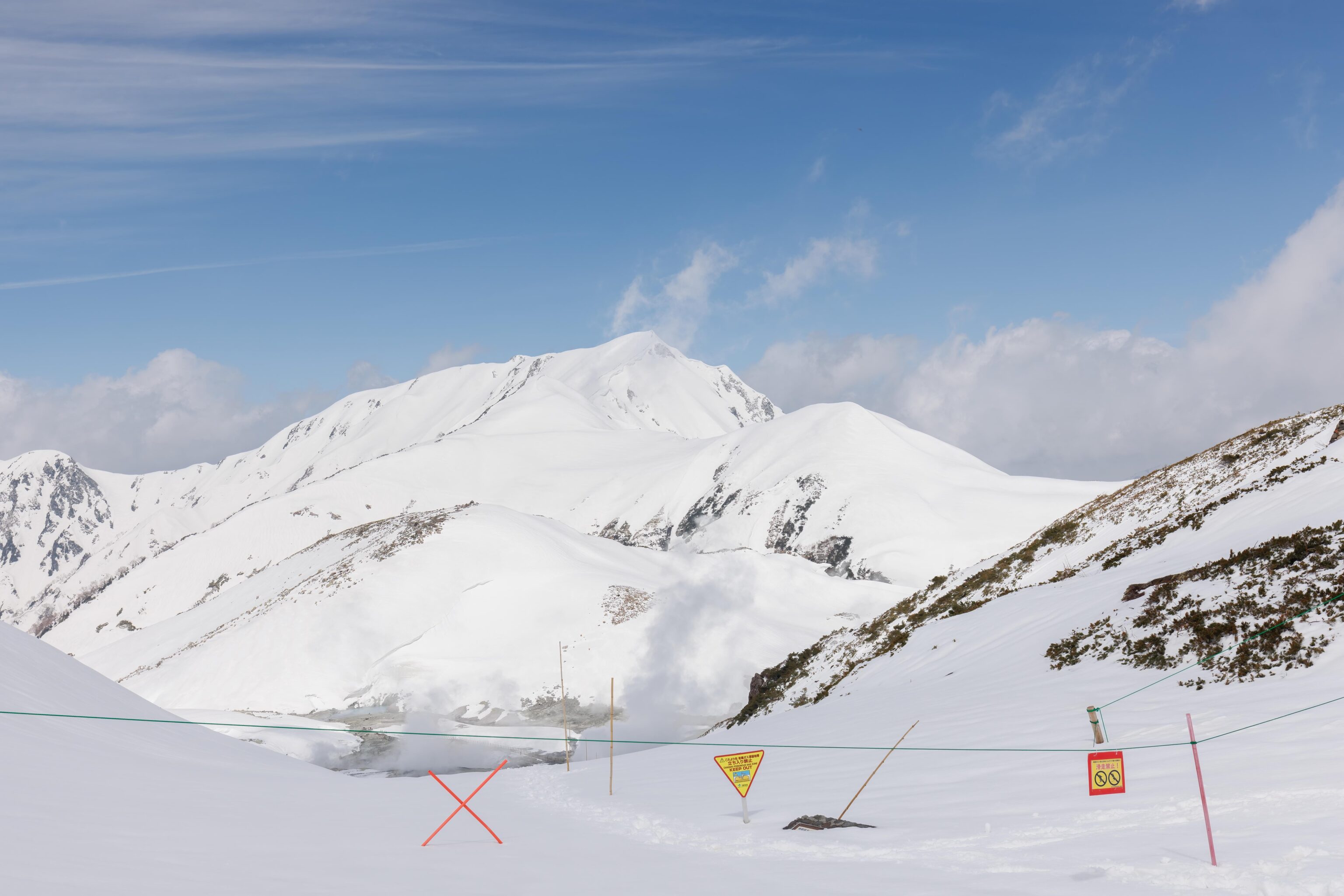
After the two vehicle convoy continued on its way without getting stuck again, we headed down the slope where they got stuck. We passed by the valley leading to the Jigokudani. It is well marked as an area that is closed. The shoe prints leading down are from what we guess was a maintenance worker. We saw him headed down at a very quick pace when we first arrived earlier in the morning. There is likely some equipment related to monitoring the gasses coming from the Jigokudani as well as whatever infrastructure is needed to pump up water for the onsen.
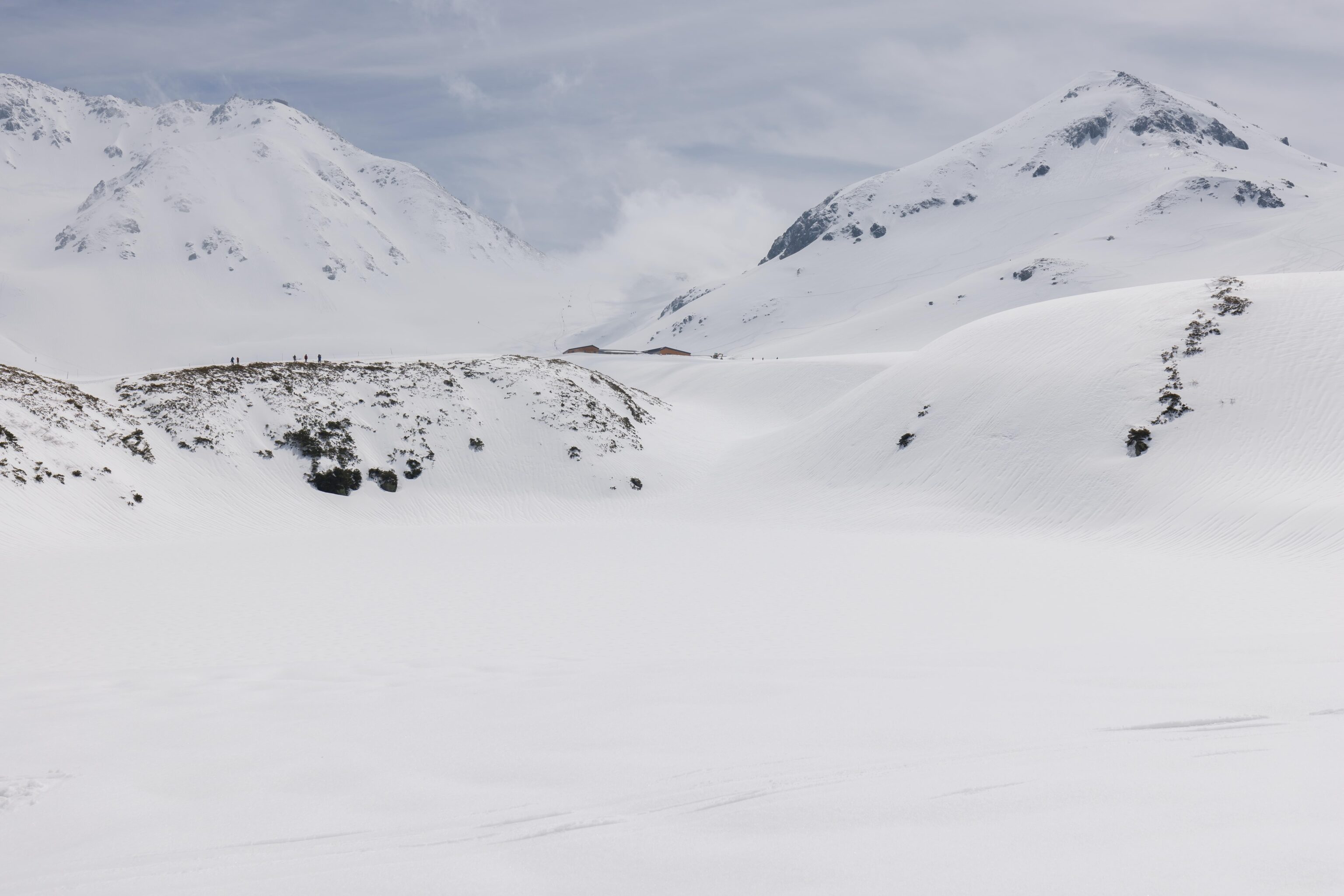
A similar view of part of Mount Tateyama and the likely Mount Jodo that I got earlier, except with the snow covered Mikuriga-ike below.
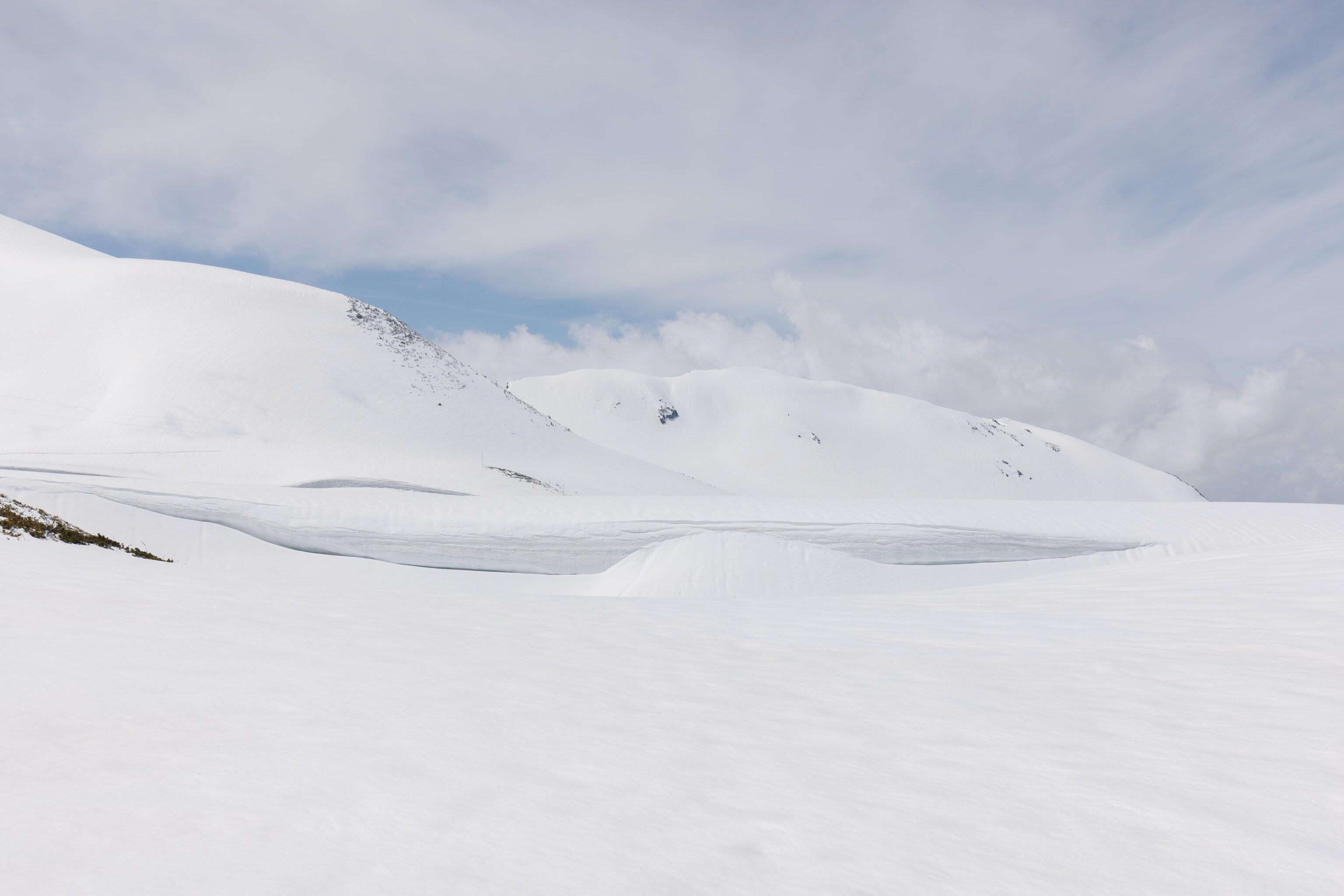
Some snow overhanging some terrain. A good reason not to go wandering off!
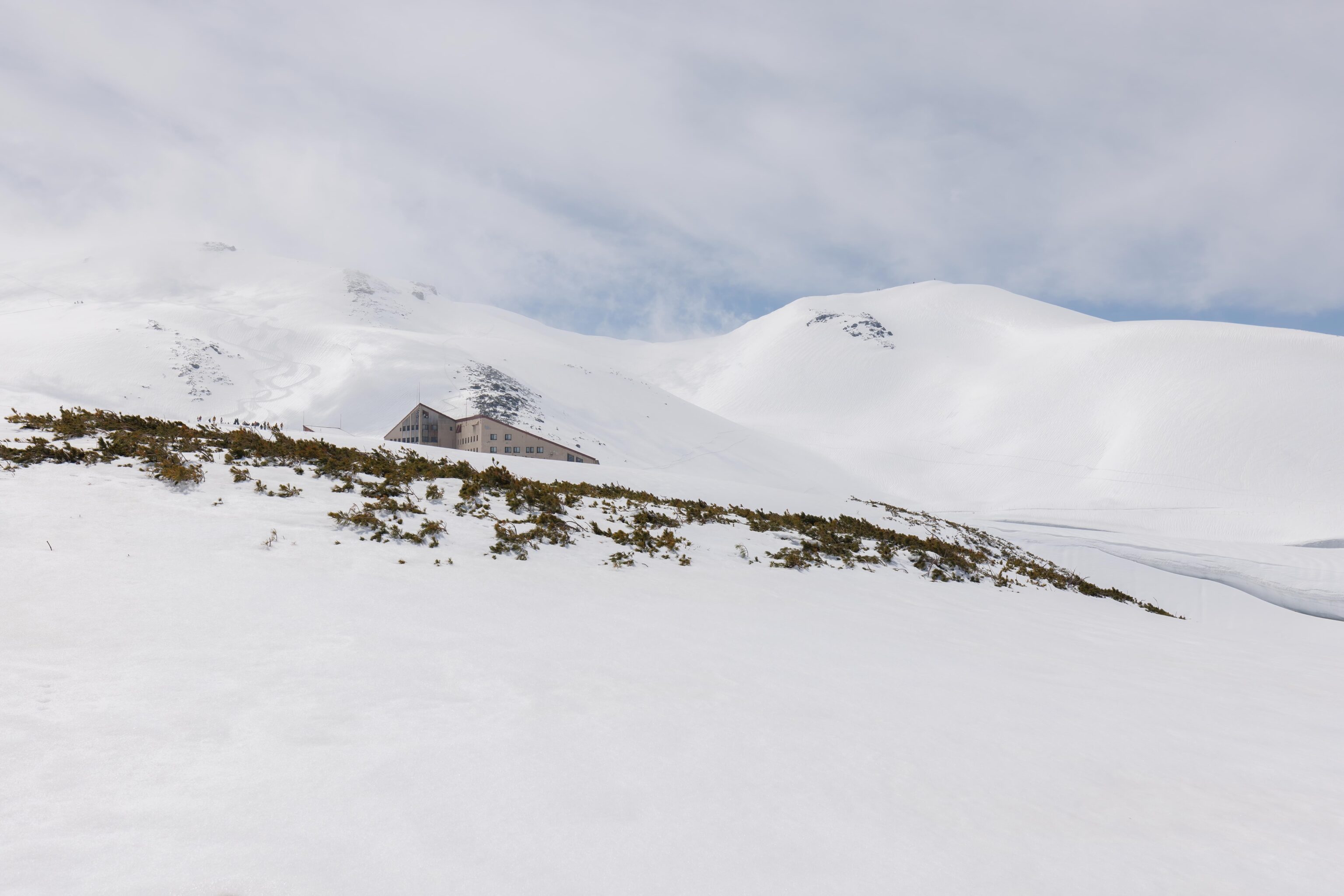
Soon, Hotel Tateyama came back into view.
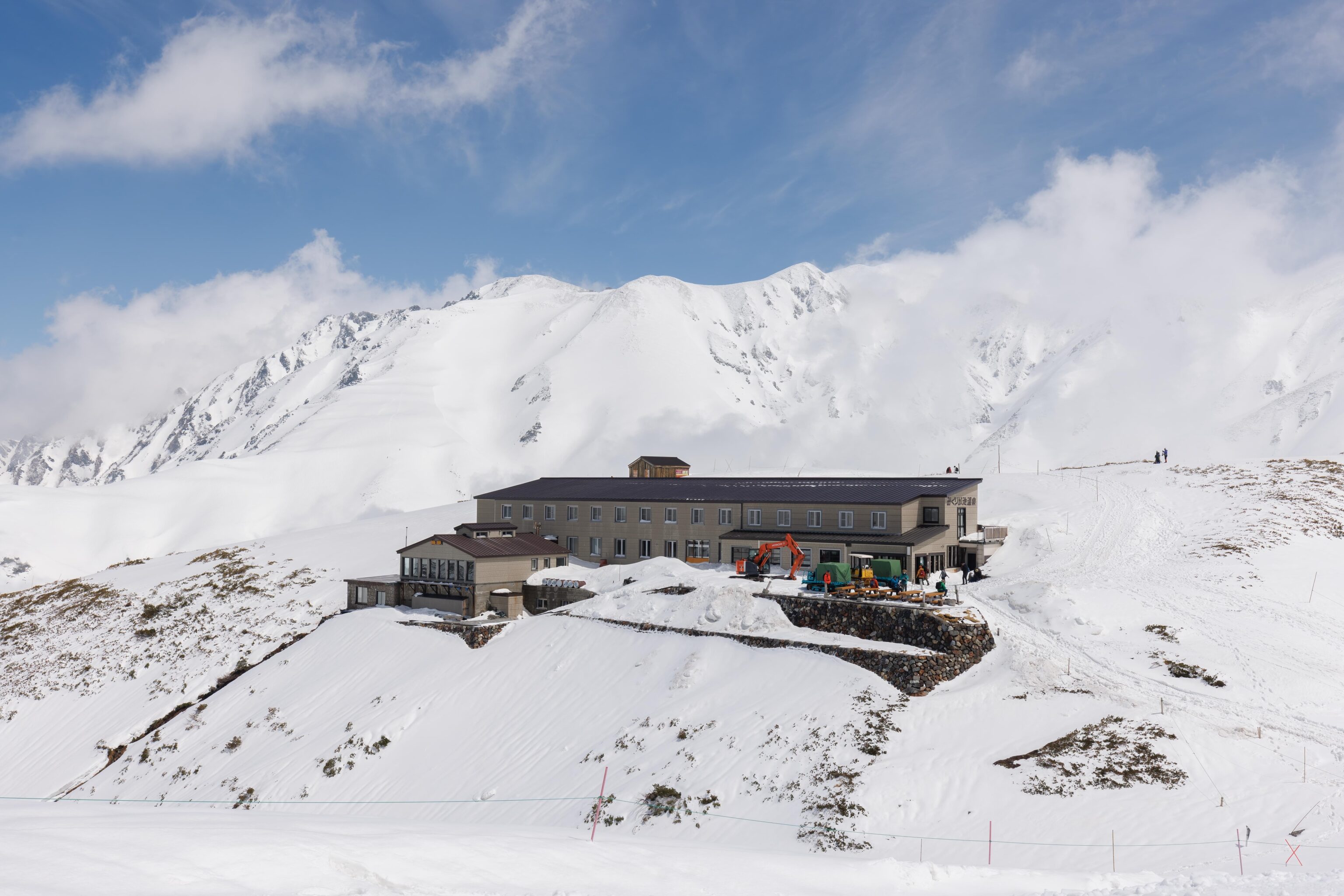
And one final look at the Mikurigaike Onsen behind us.

We took this panorama of the Mikuriga-ike after we walked a bit further. This is supposed to be a beautiful view in the summer when the pond’s surface is still and the mountains are reflected upon it. It is still beautiful when snow covered though!
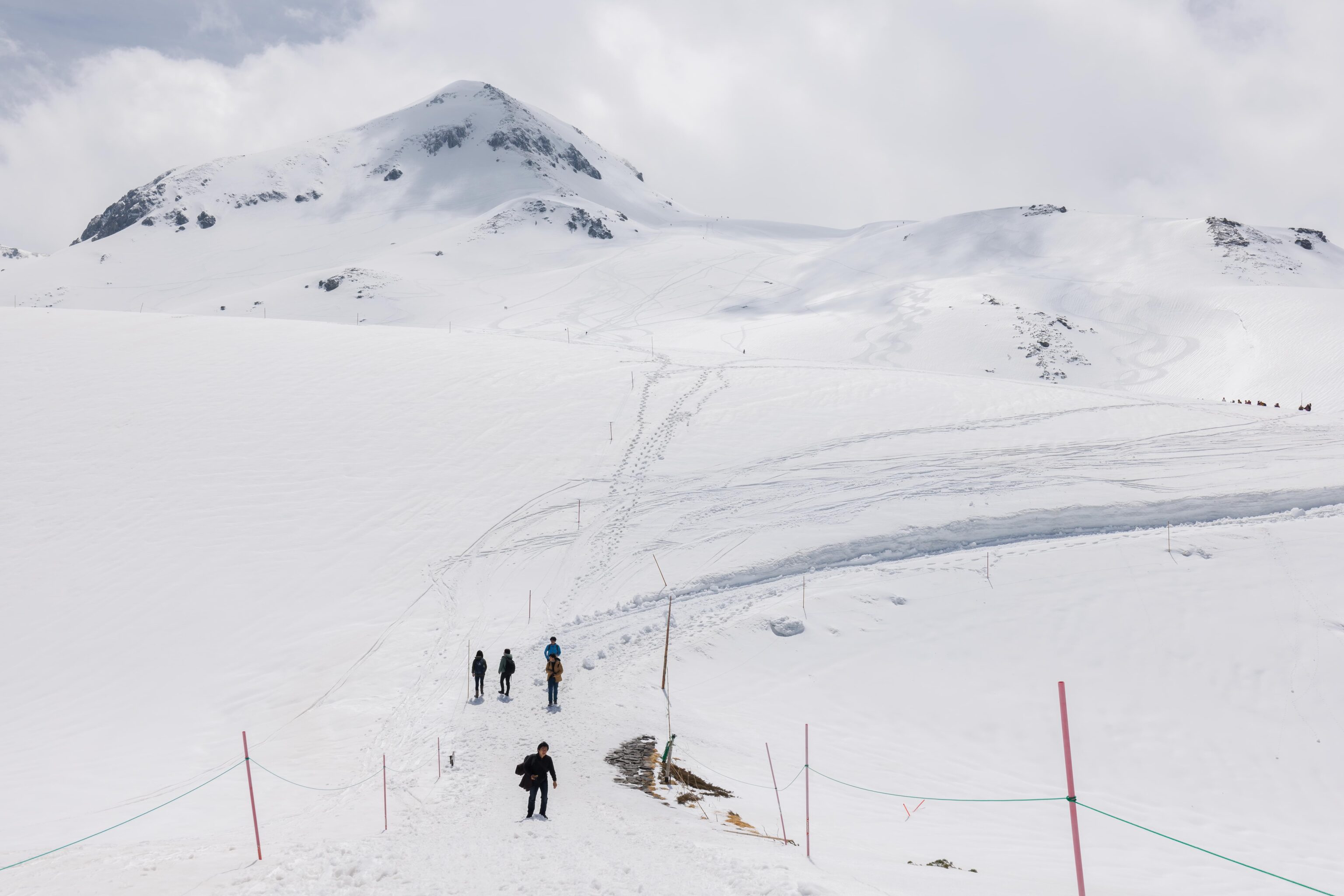
There still weren’t very many people on this trail. Although it was slushy earlier, it was a bit better now as the people who were using the trail packed it down somewhat.
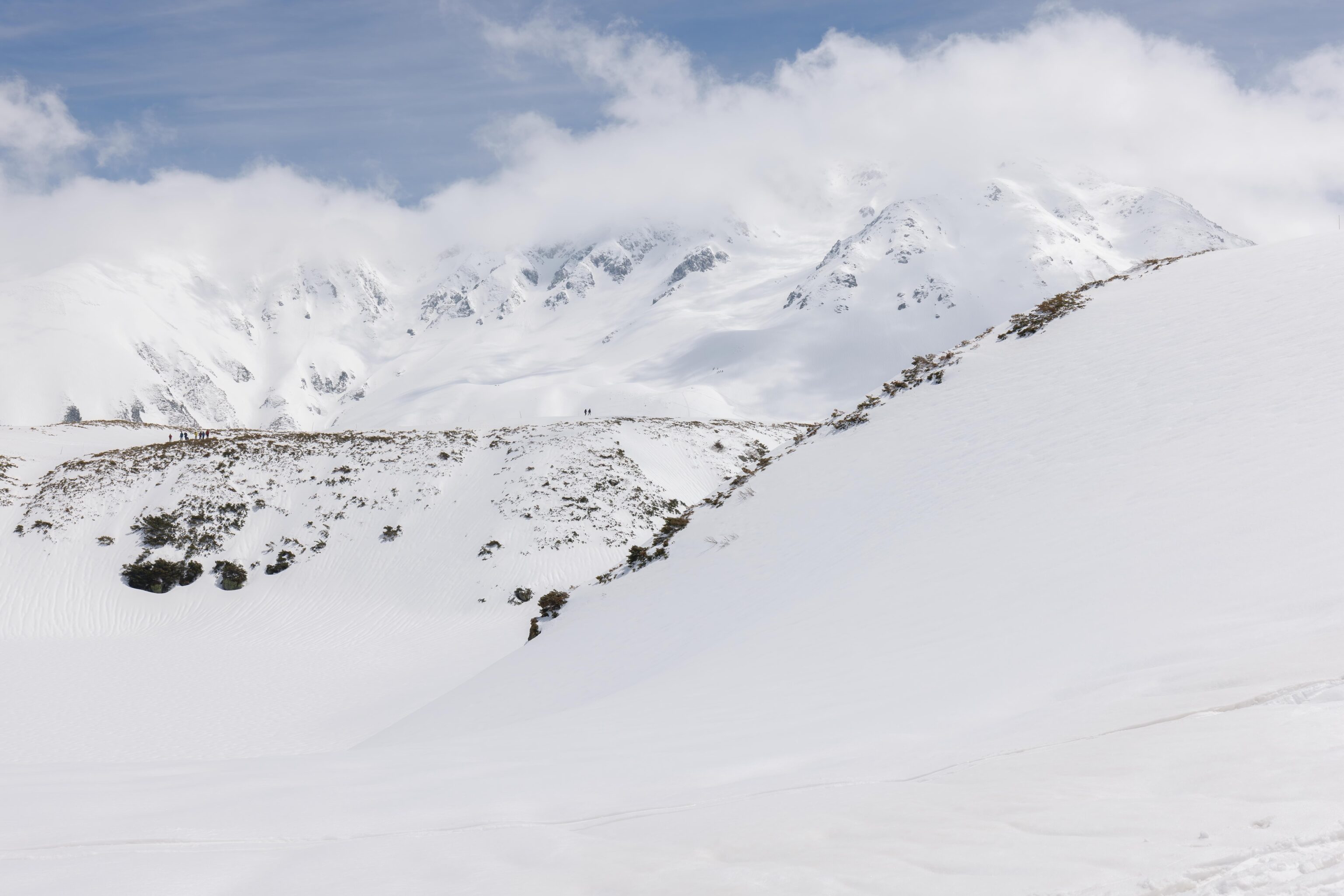
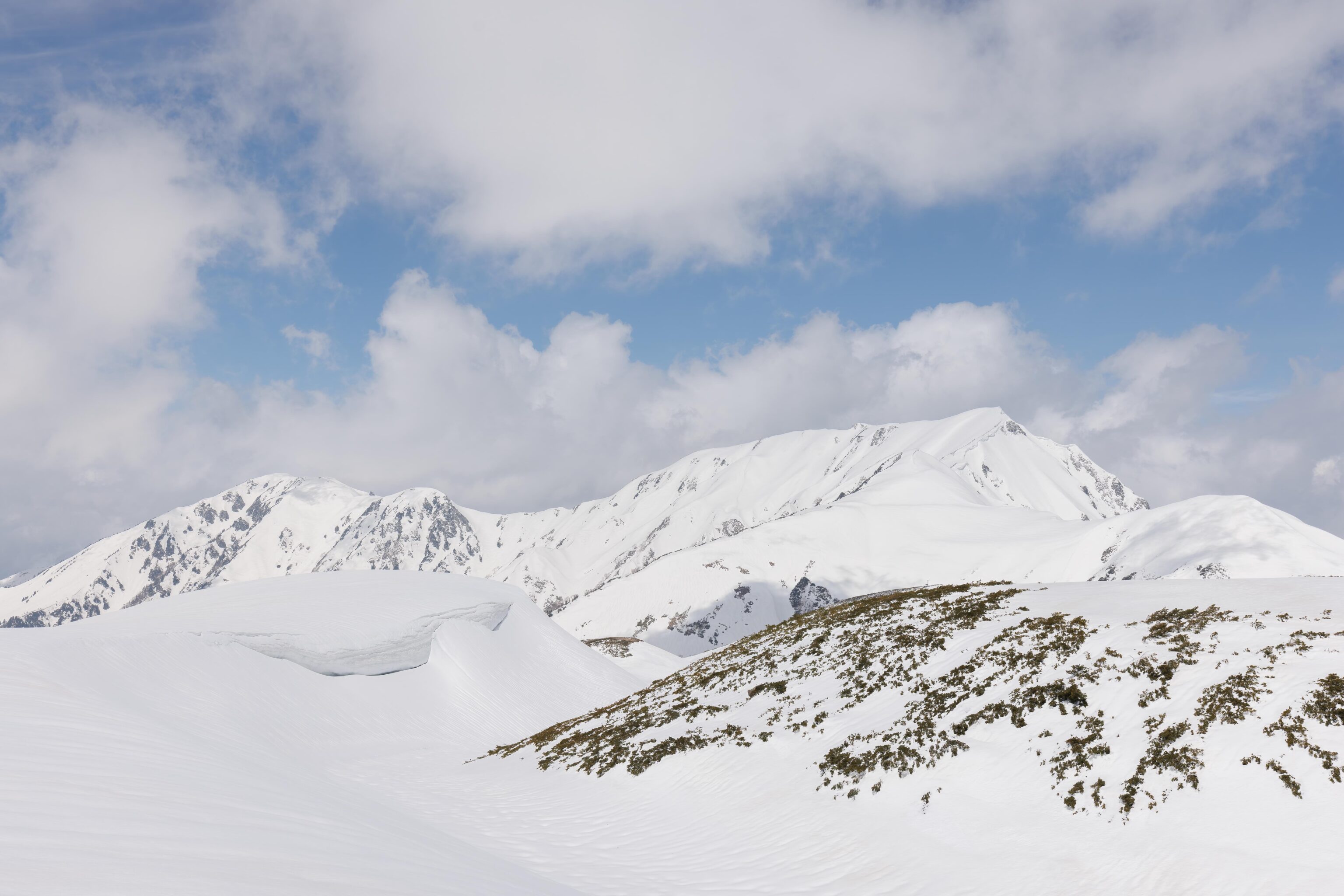
A few last scenes as we got closer to Murodo Station.
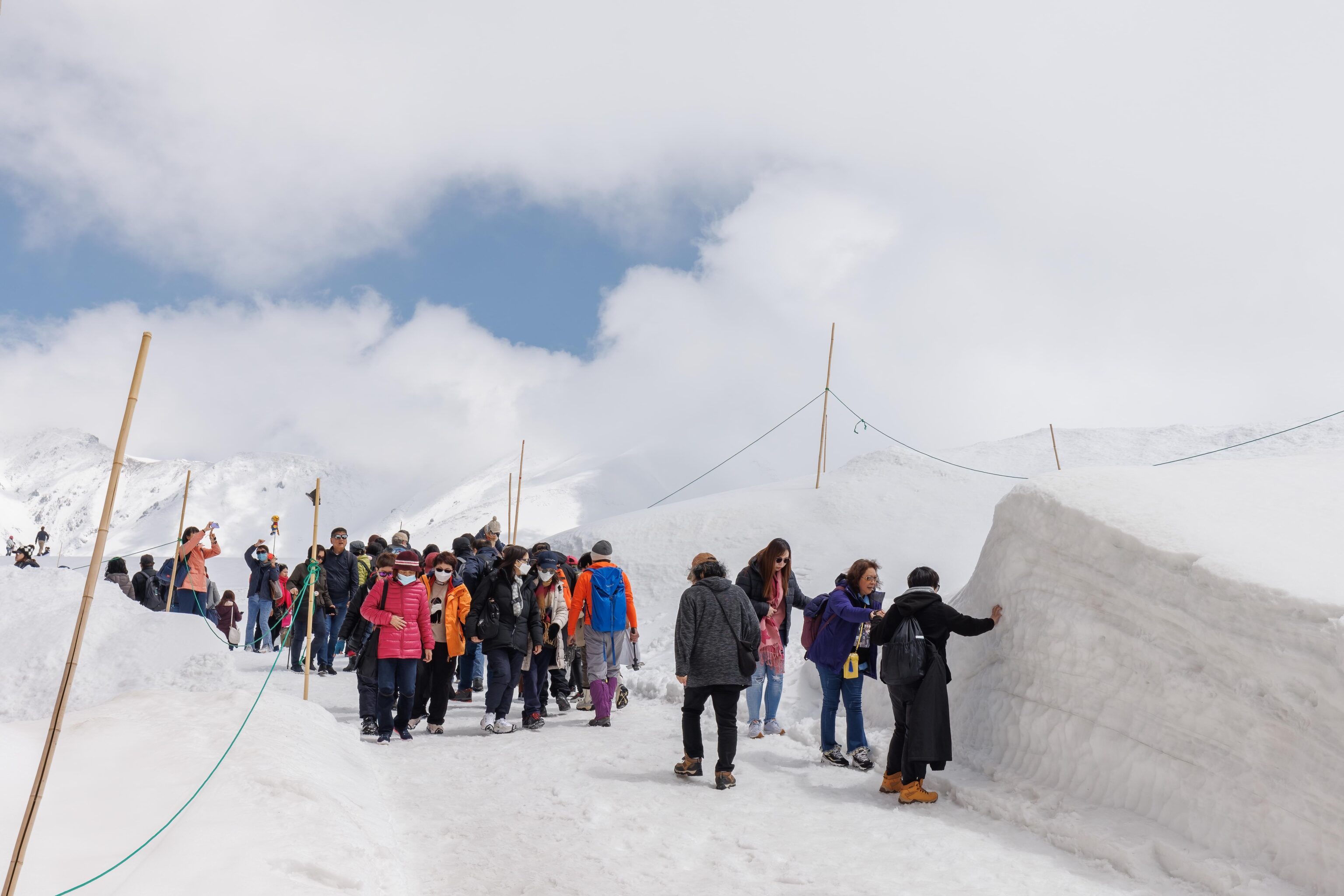
Although most of the trail wasn’t busy, the area near Murodo Station was packed with people!
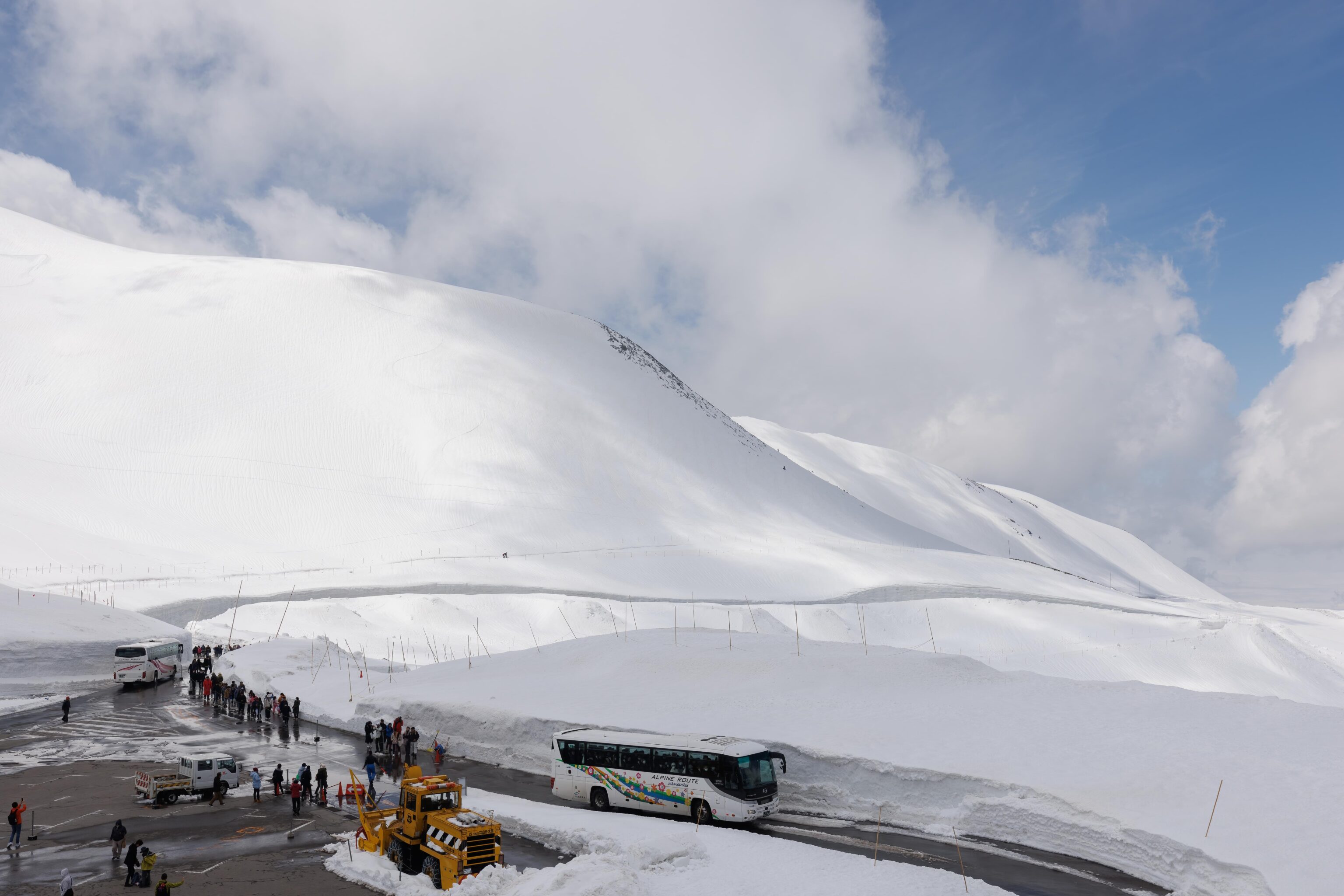
Returning to the rooftop observation deck, we could see many people headed to and from the snow corridor.
We went back inside, returned our snowshoes, and gathered our gear to head onward to Ogizawa, the eastern end of the Tateyama Kurobe Alpine Route.
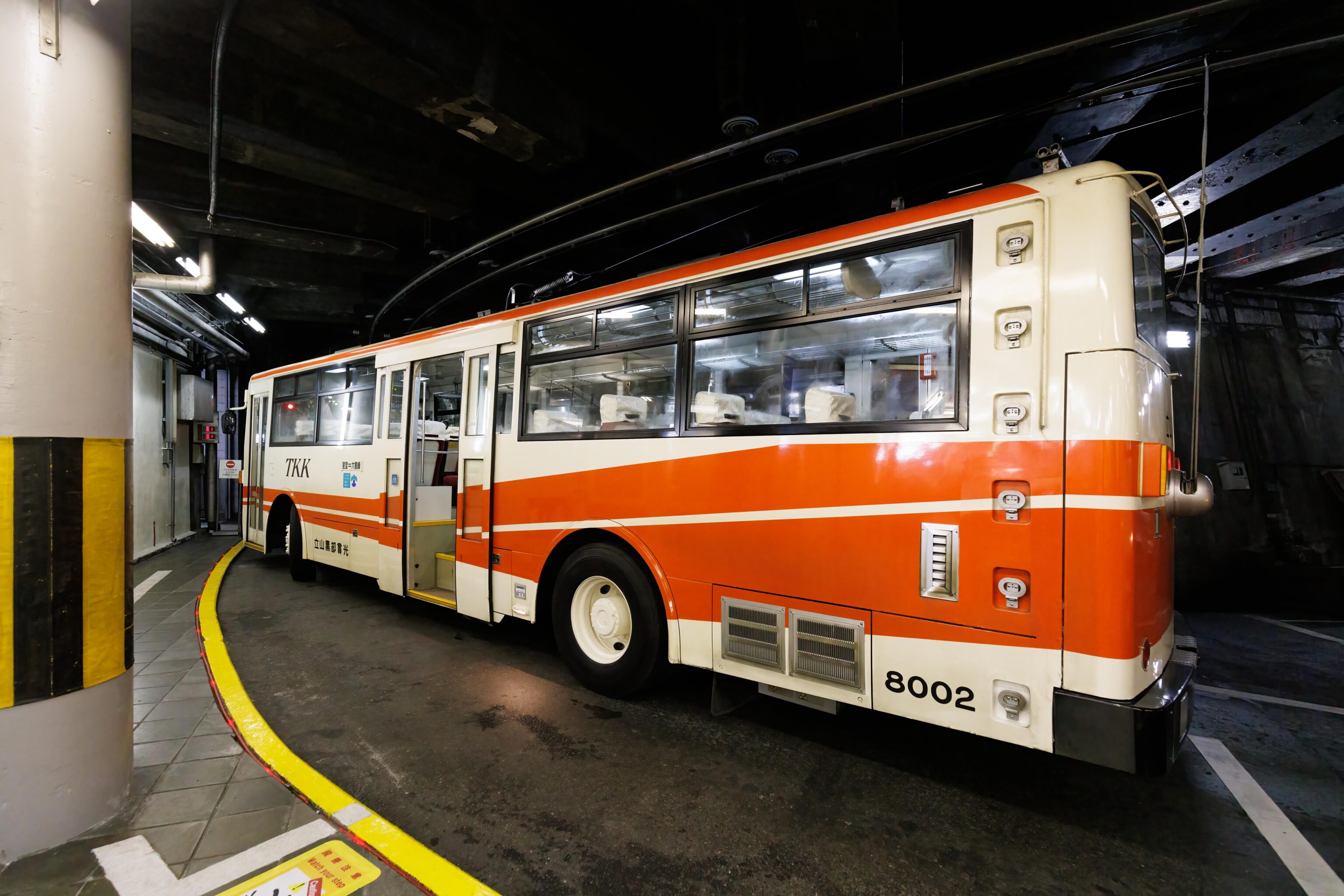
There is a tunnel leading from Murodo Station through the mountains to Daikanbo, about 2 miles to the east. The tunnel is traversed via Japan’s last remaining trolleybus. They were operating in groups of 3 when we boarded. We got on the last one and managed to get seats.
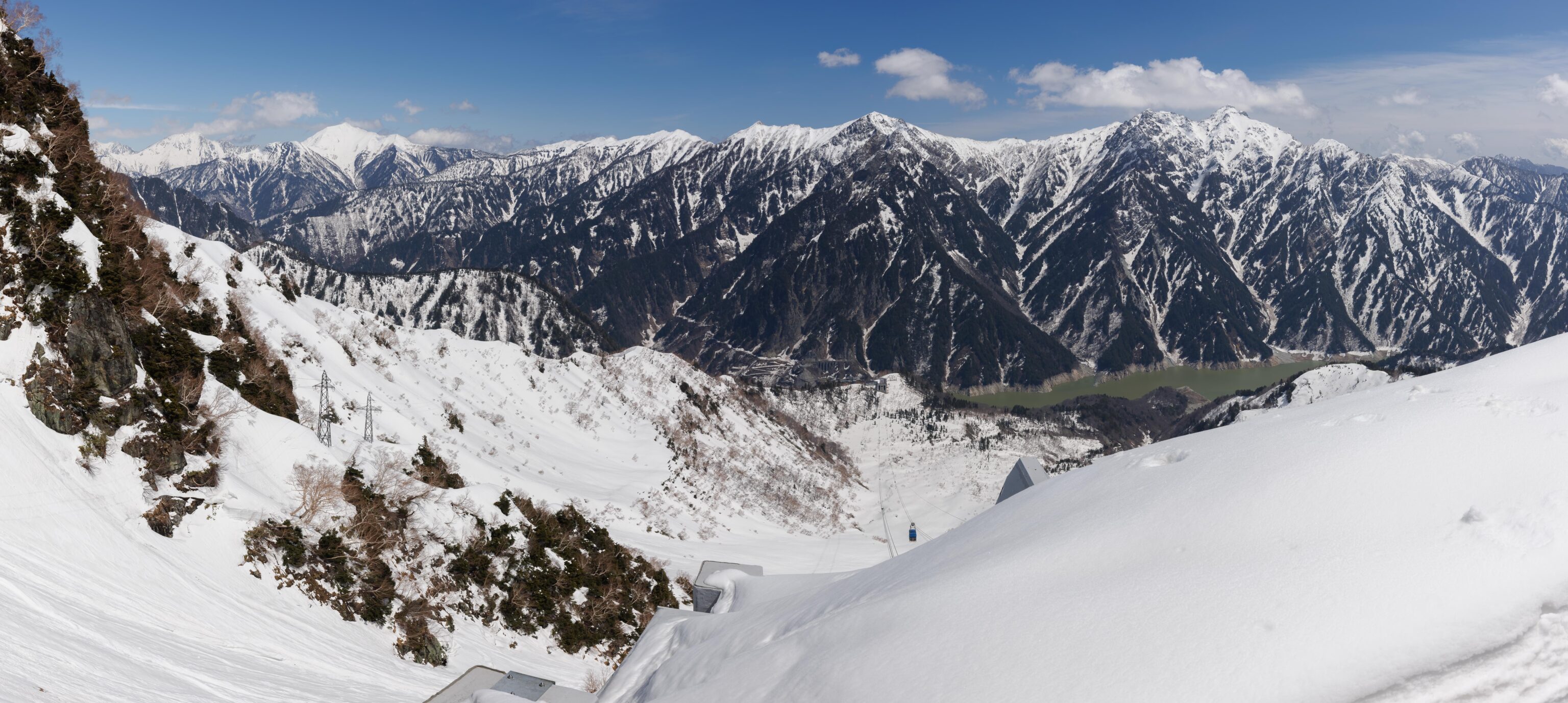
Upon reaching Daikanbo, we headed for the outdoor observation deck above the station. Down below, we could see the Kurobe Dam as well as the lake behind it.
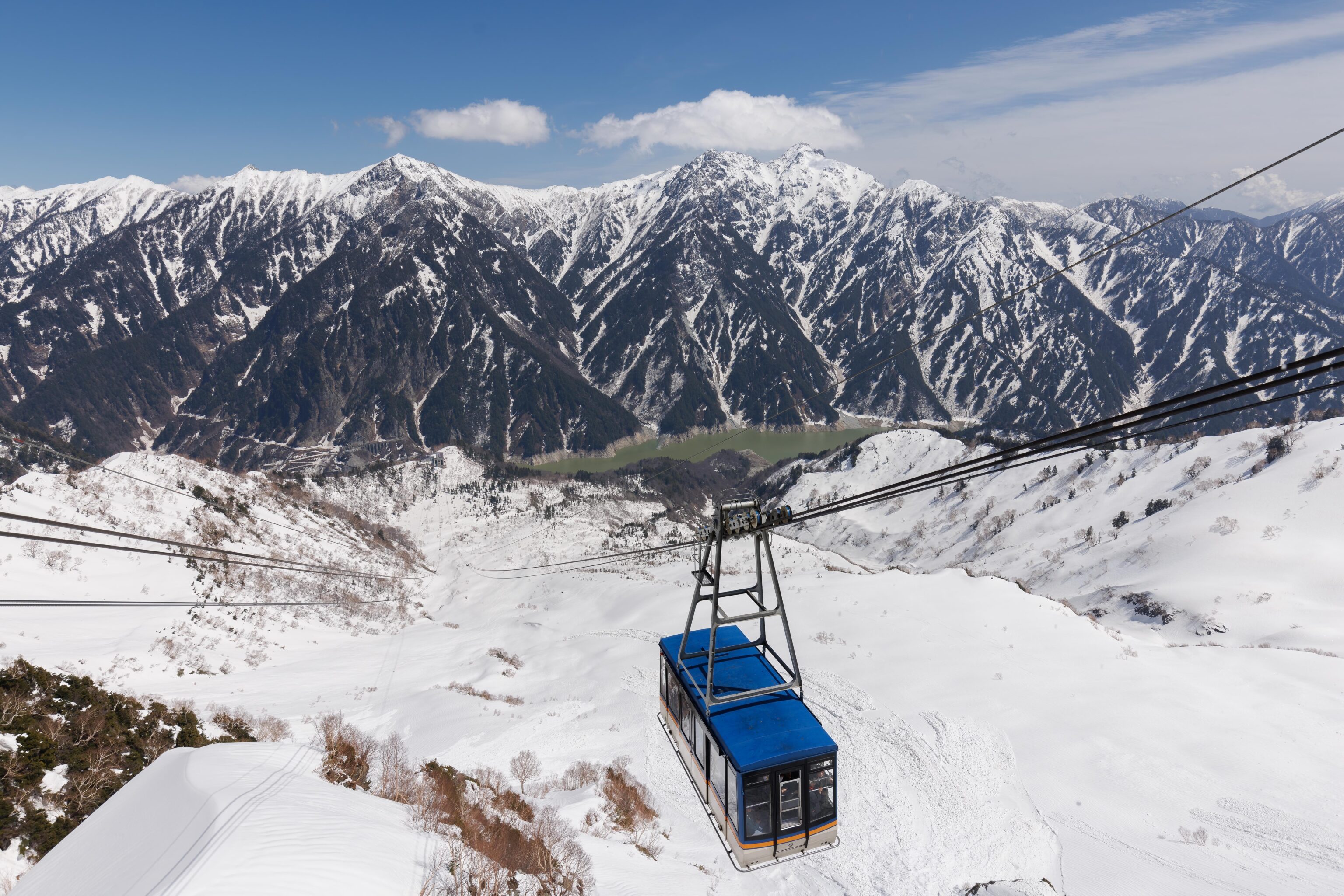
Daikanbo is built into the side of the mountain and is only accessible by the trolleybus to Murodo and an aerial tram down to Kurobedaira. The Japanese use the term ropeway.
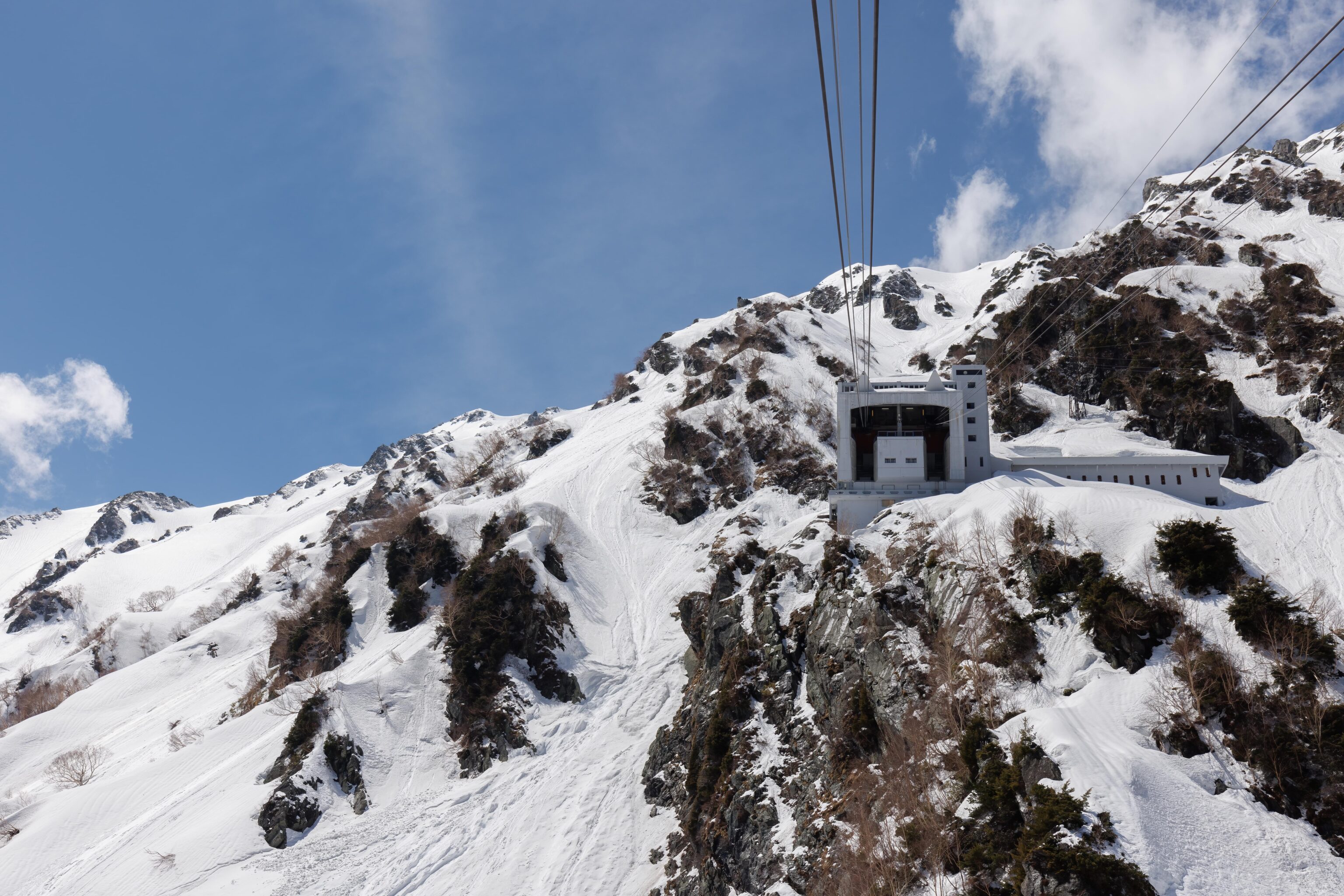
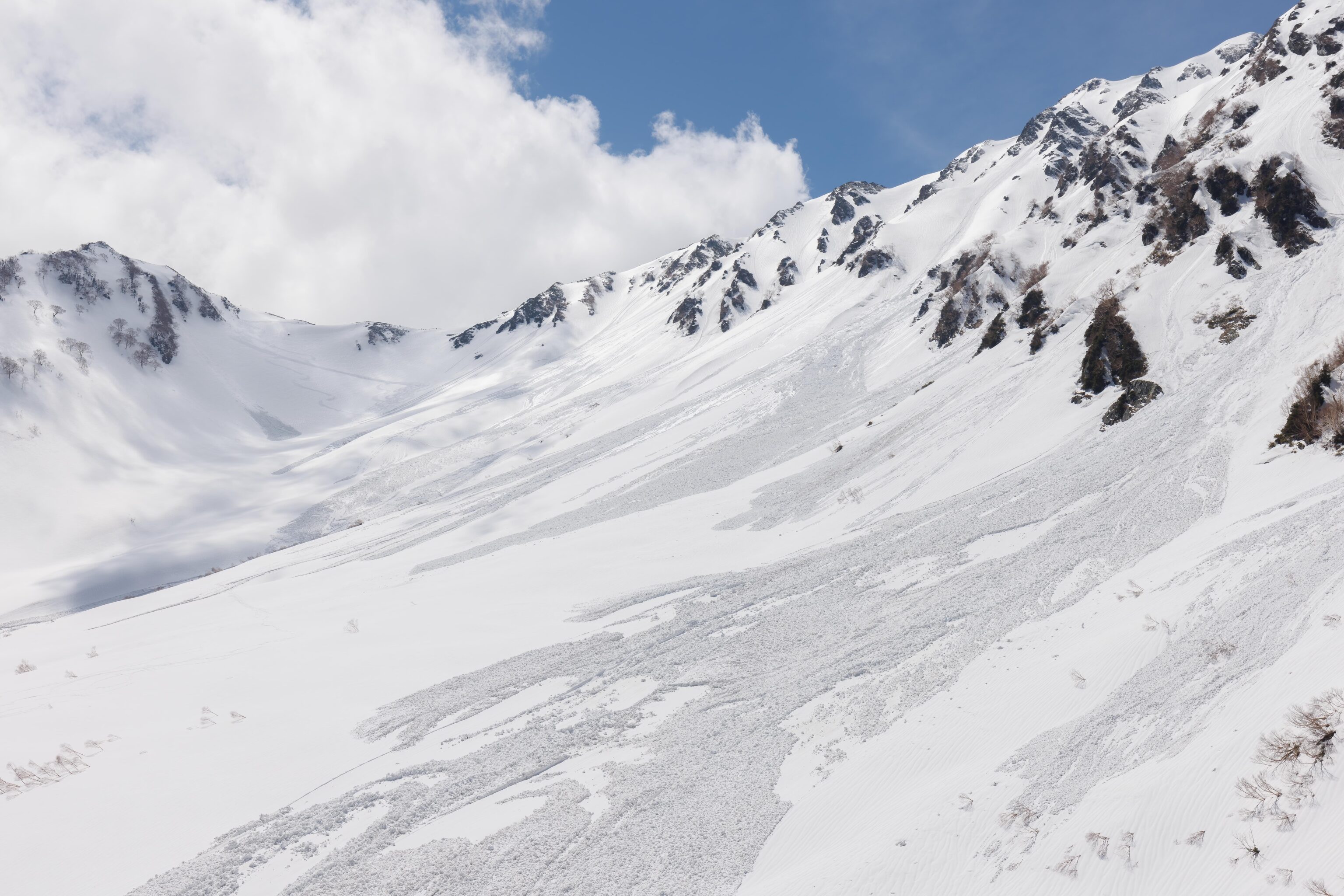
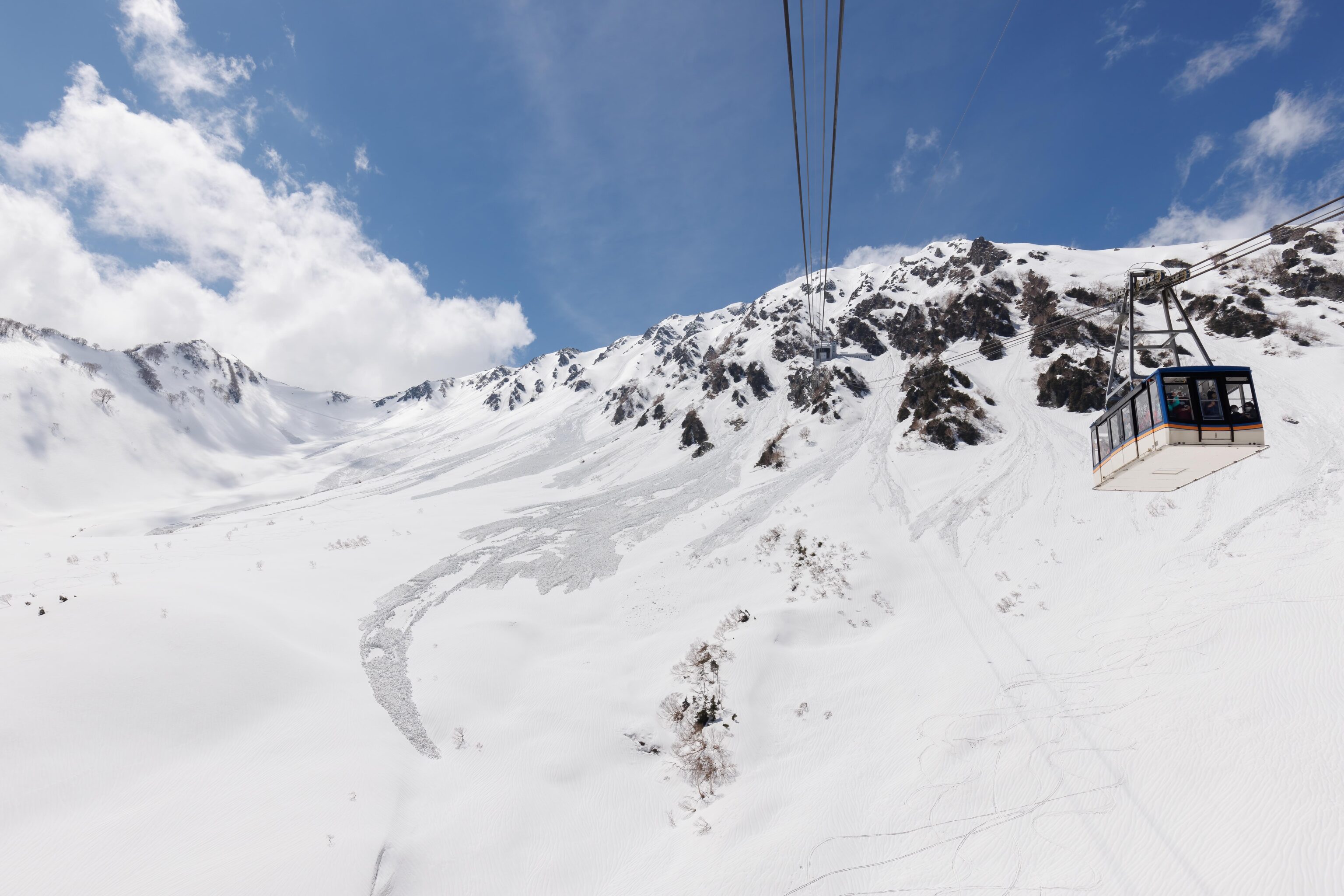
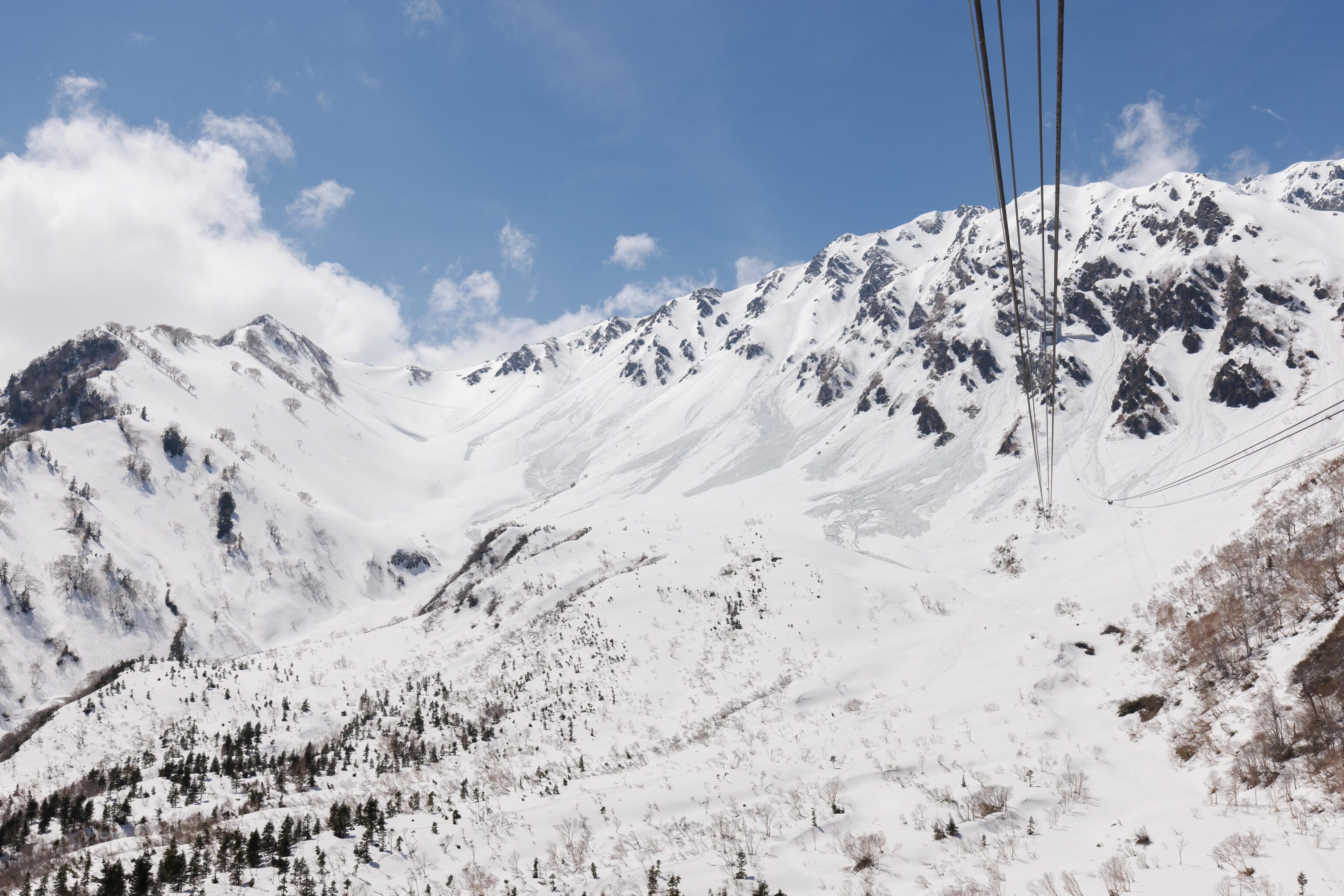
We stood by the windows on the mountain side of the aerial tram car when it arrived. We got a great view of the mountain as we descended. Below us, we saw signs of avalanche activity as well as paths carved by skiers.
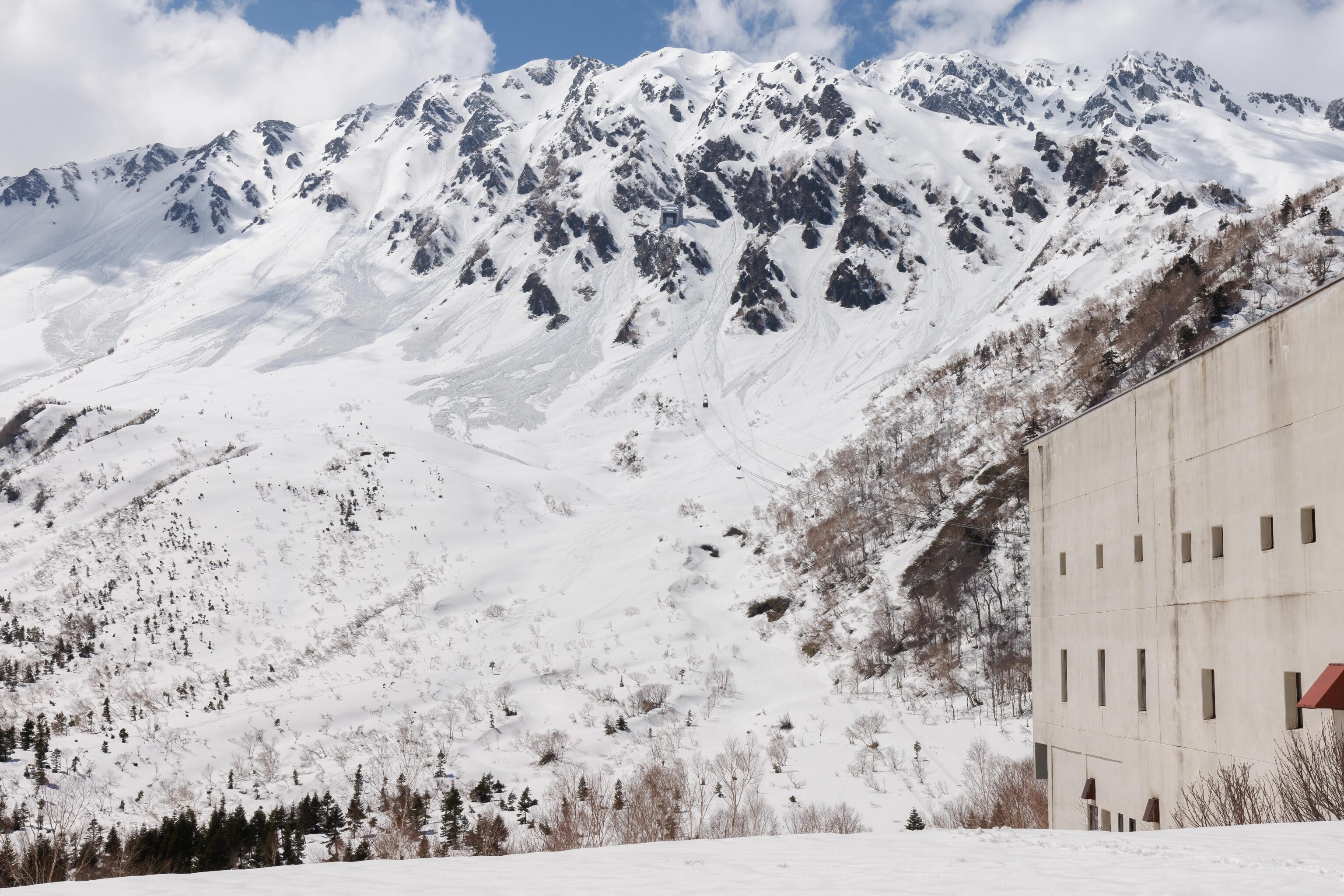
Upon reaching Kurobedaira, we headed outside to a large patio area. We had a great view of the mountain that we descended from. We quickly headed to the next form of transportation, a funicular that heads down to Kurobeko by the Kurobe Dam. The Japanese also refer to this form of transportation as a cable car, a bit different from the American definition but conceptually the same with a rail vehicle pulled by a cable.
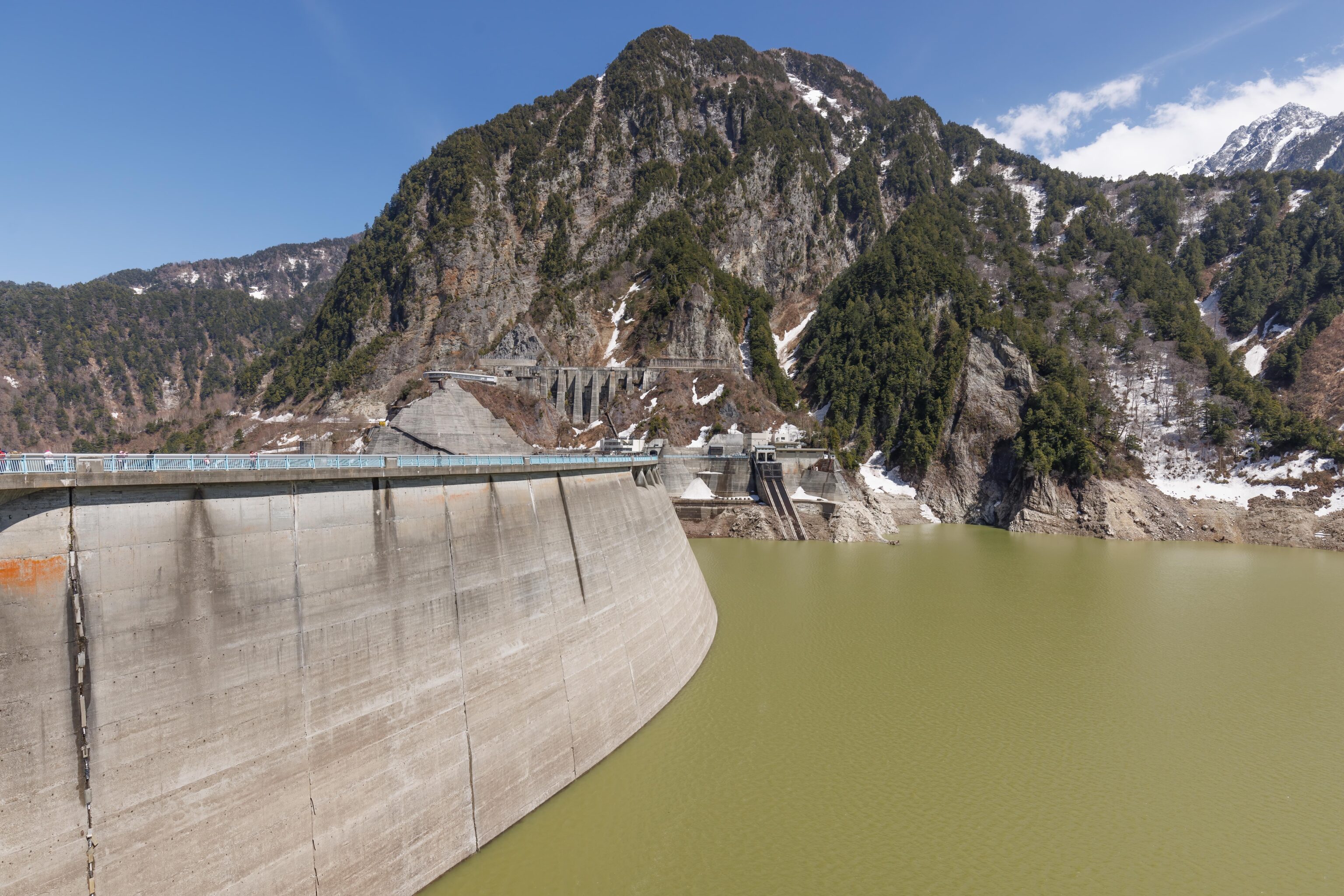
Upon reaching the Kurobe Dam, we realized it was much hotter at this lower elevation! And the sun was shining brightly above a mostly clear sky. There were some patches of snow at this altitude but it was mostly clear of snow.
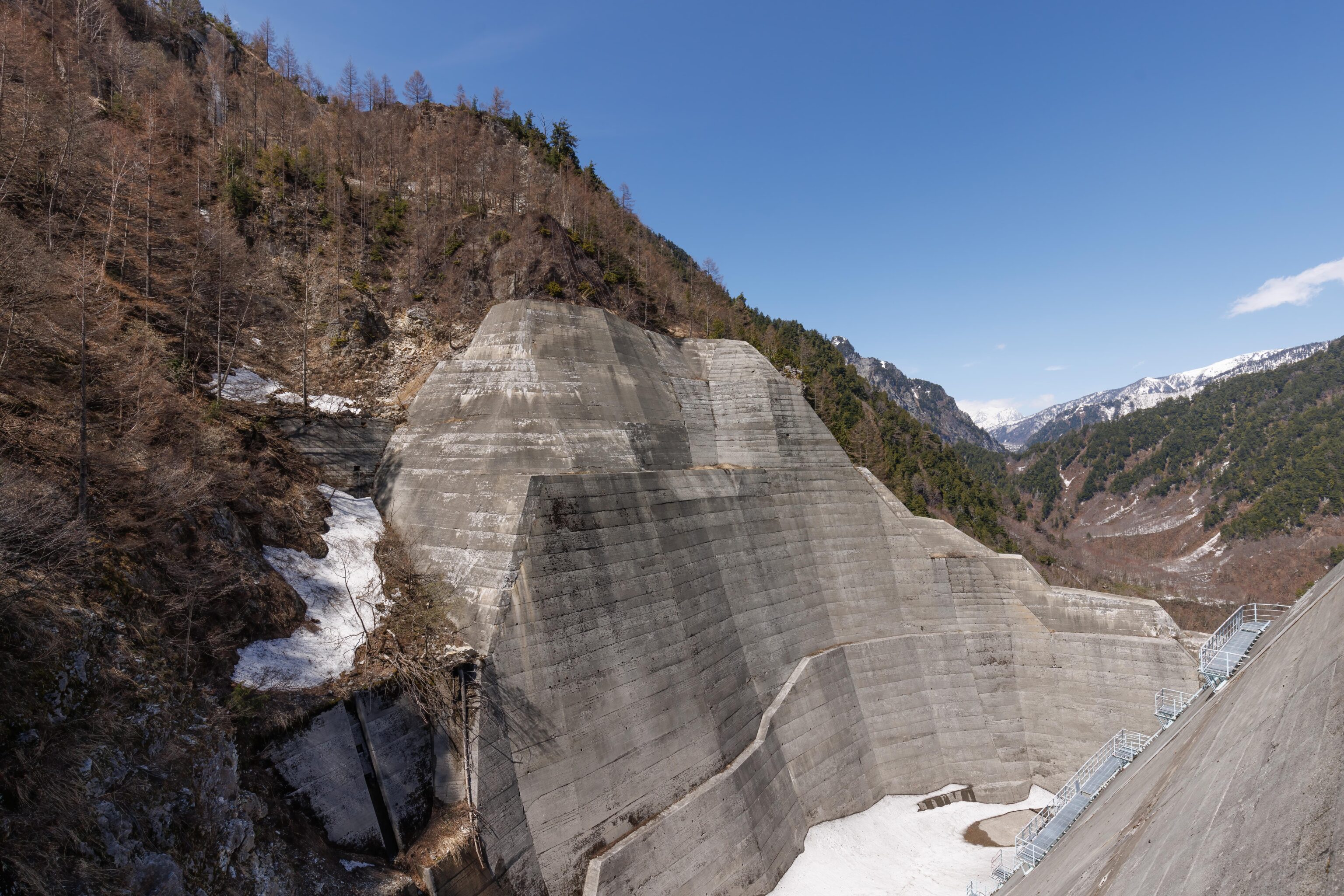
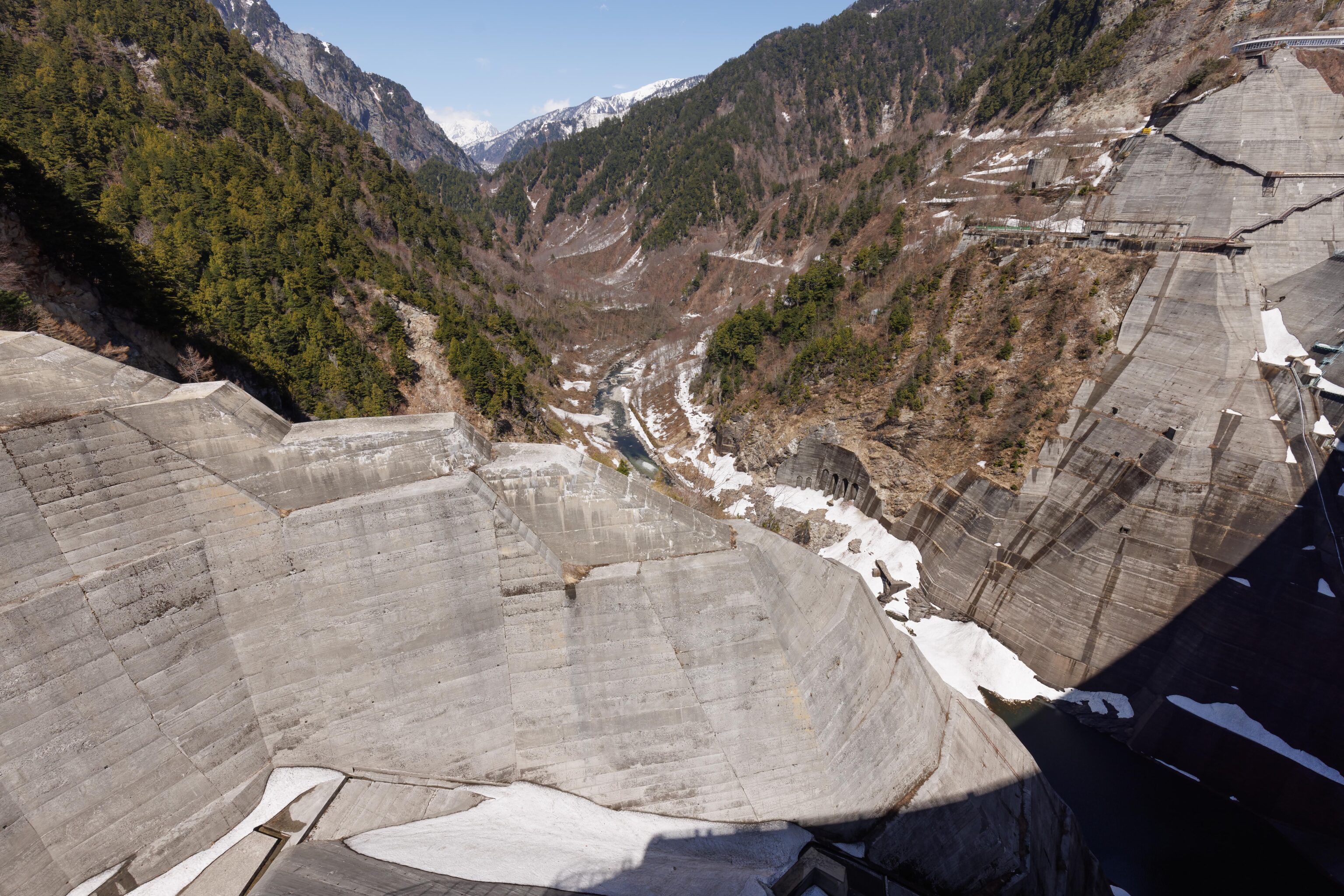
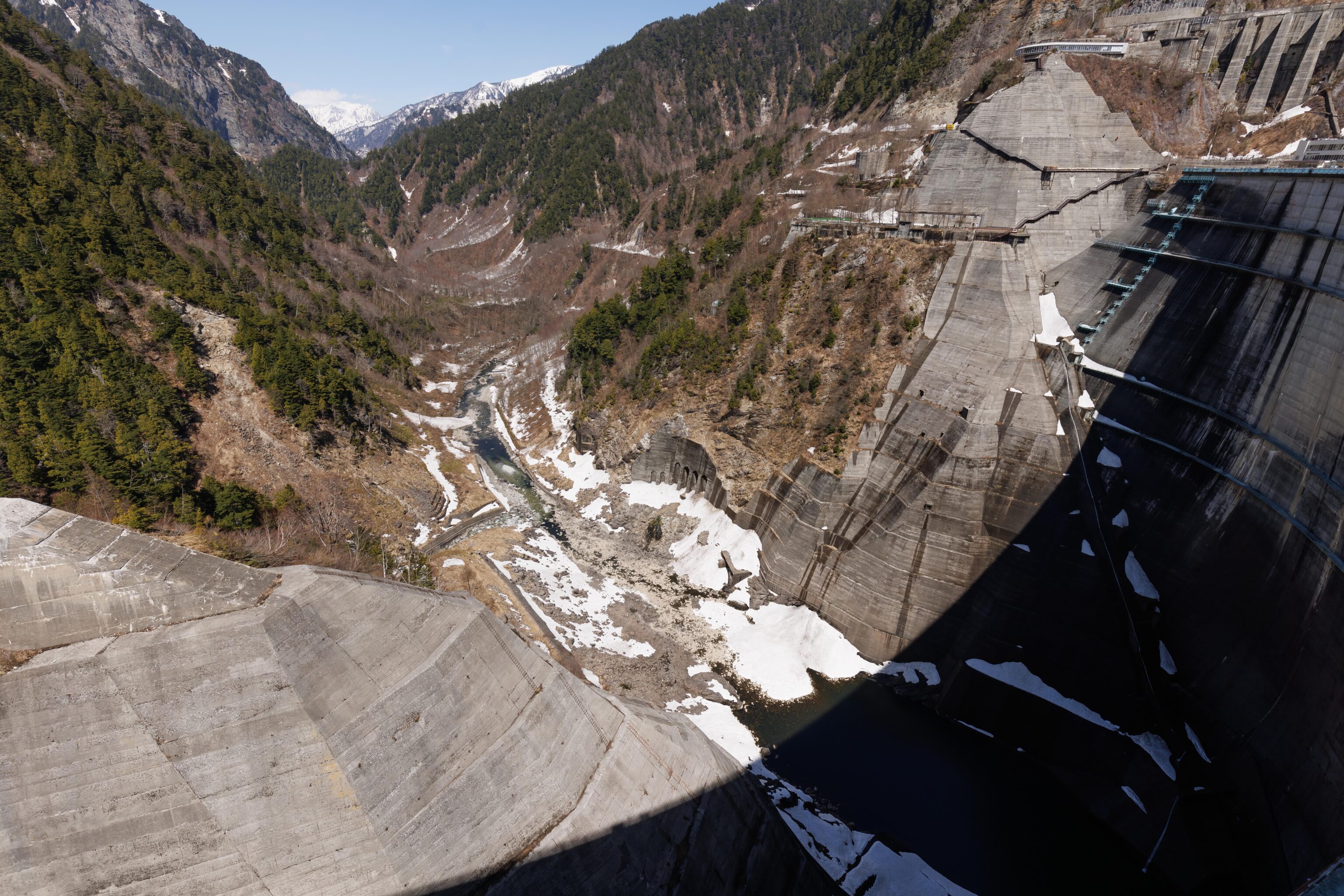
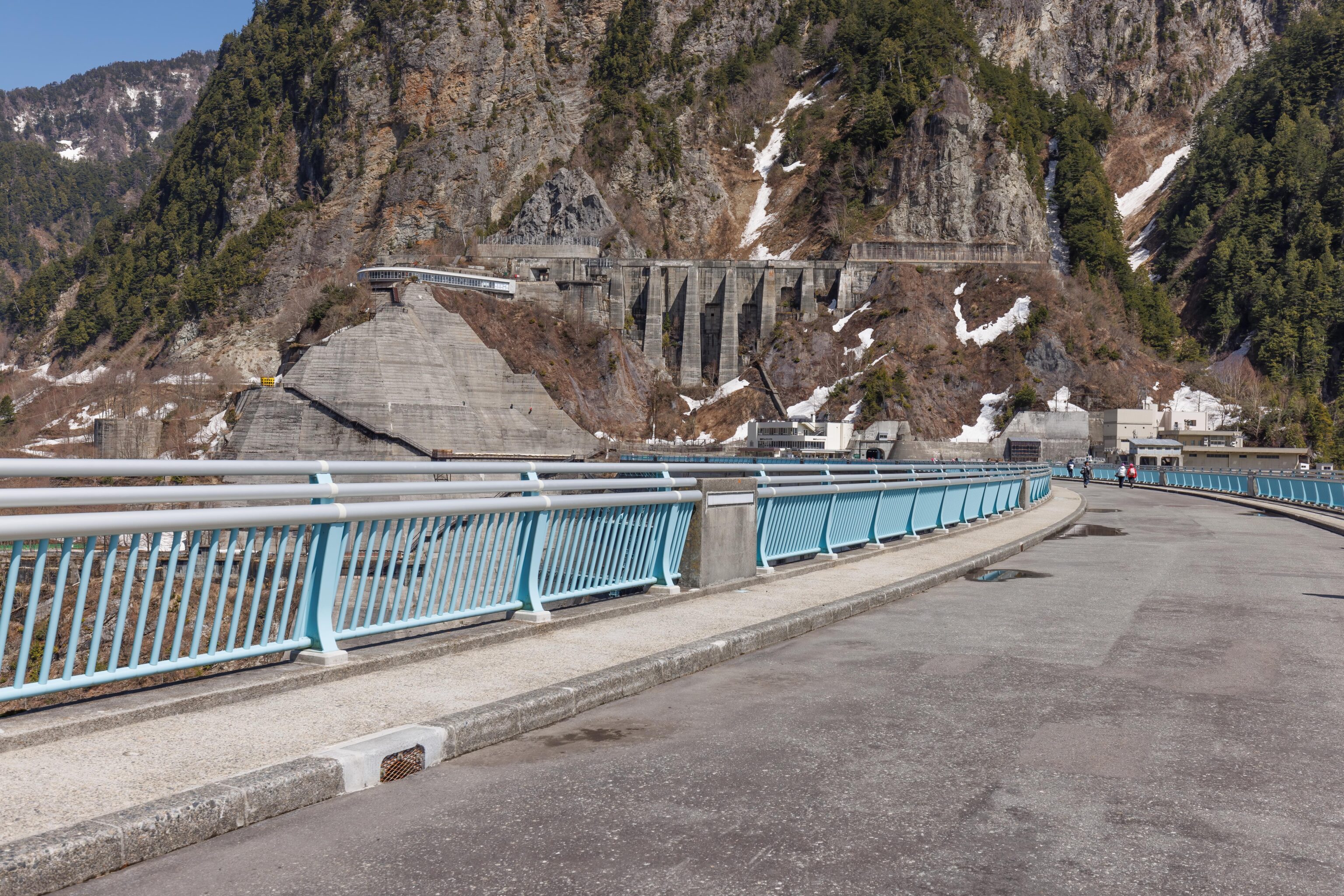
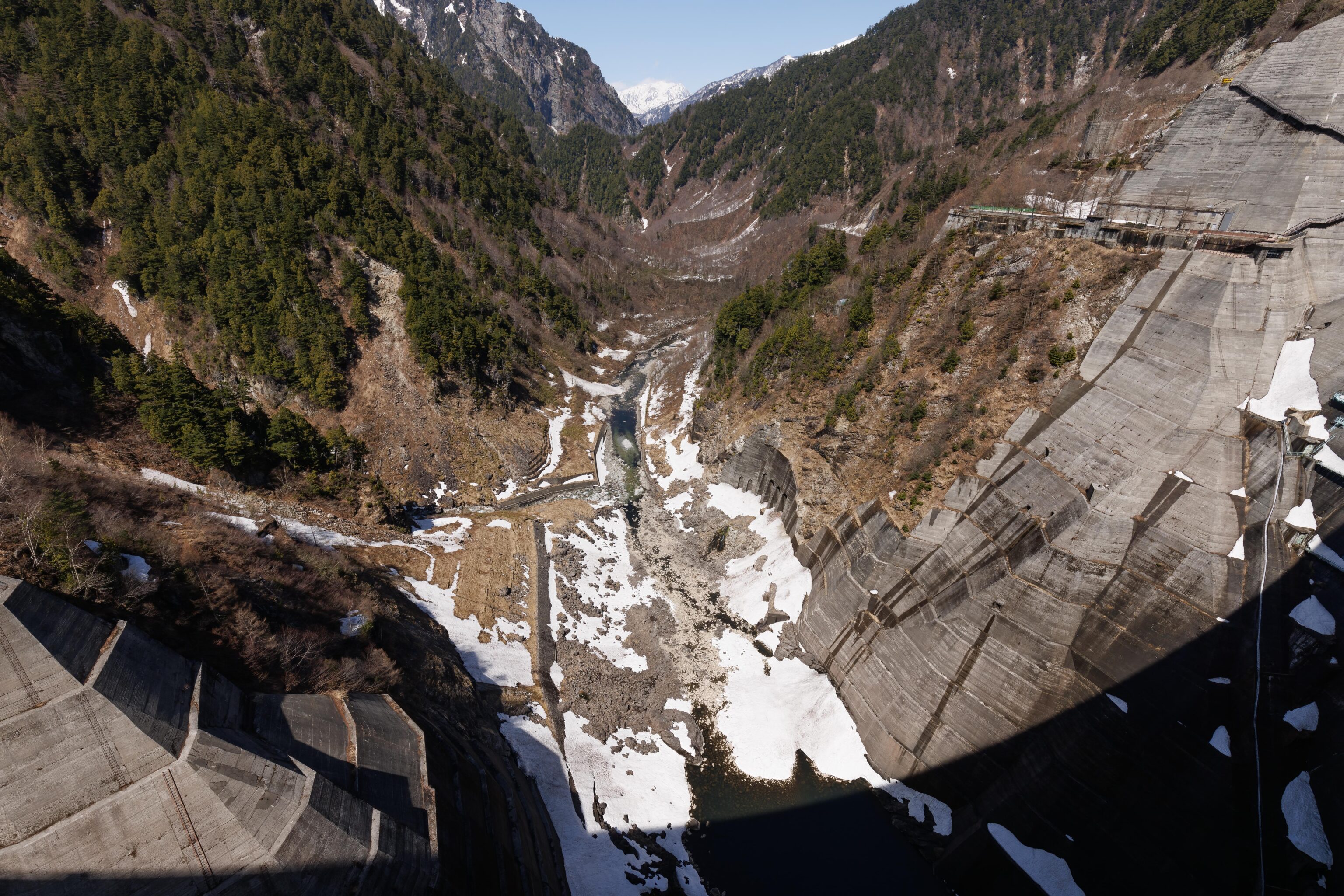
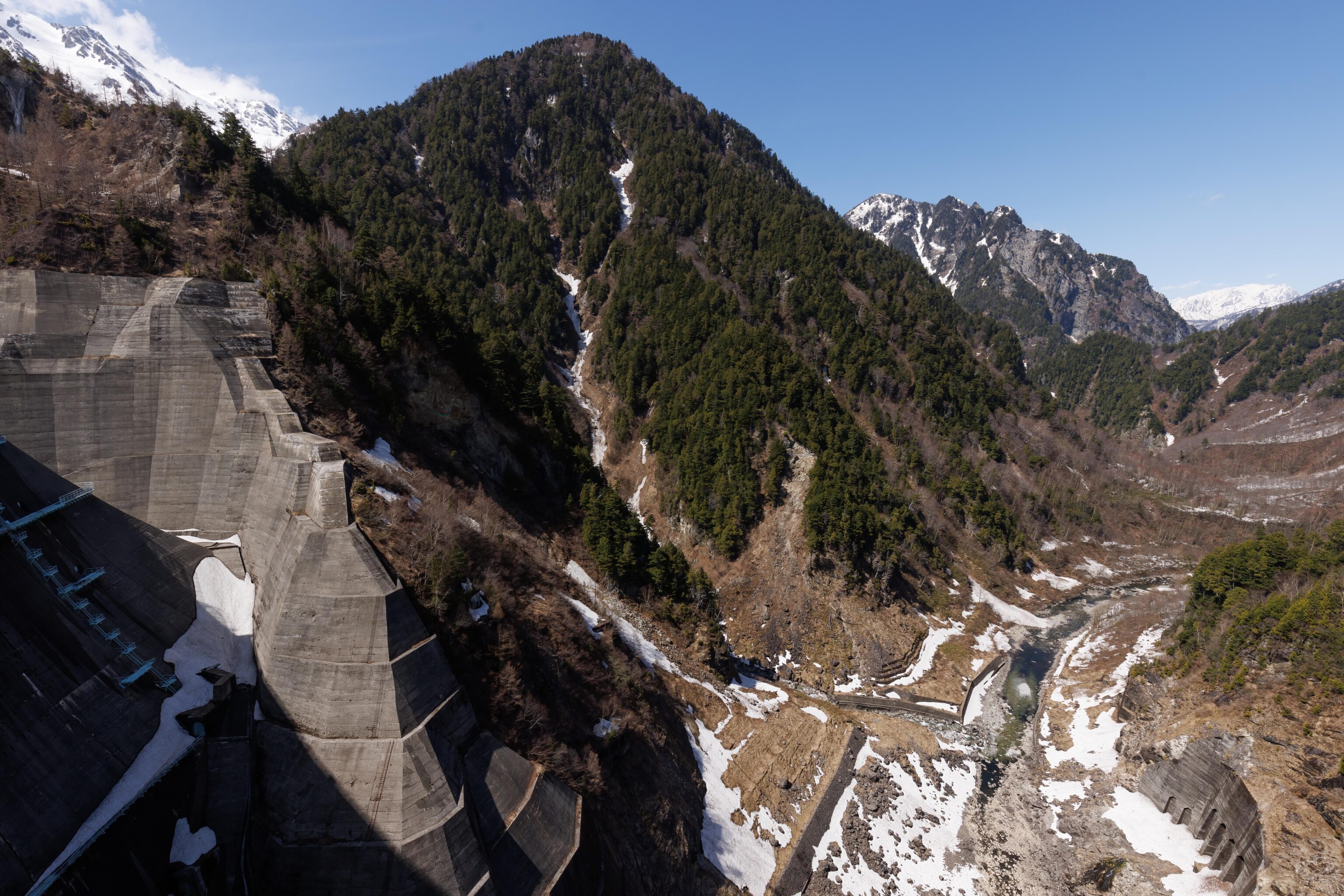
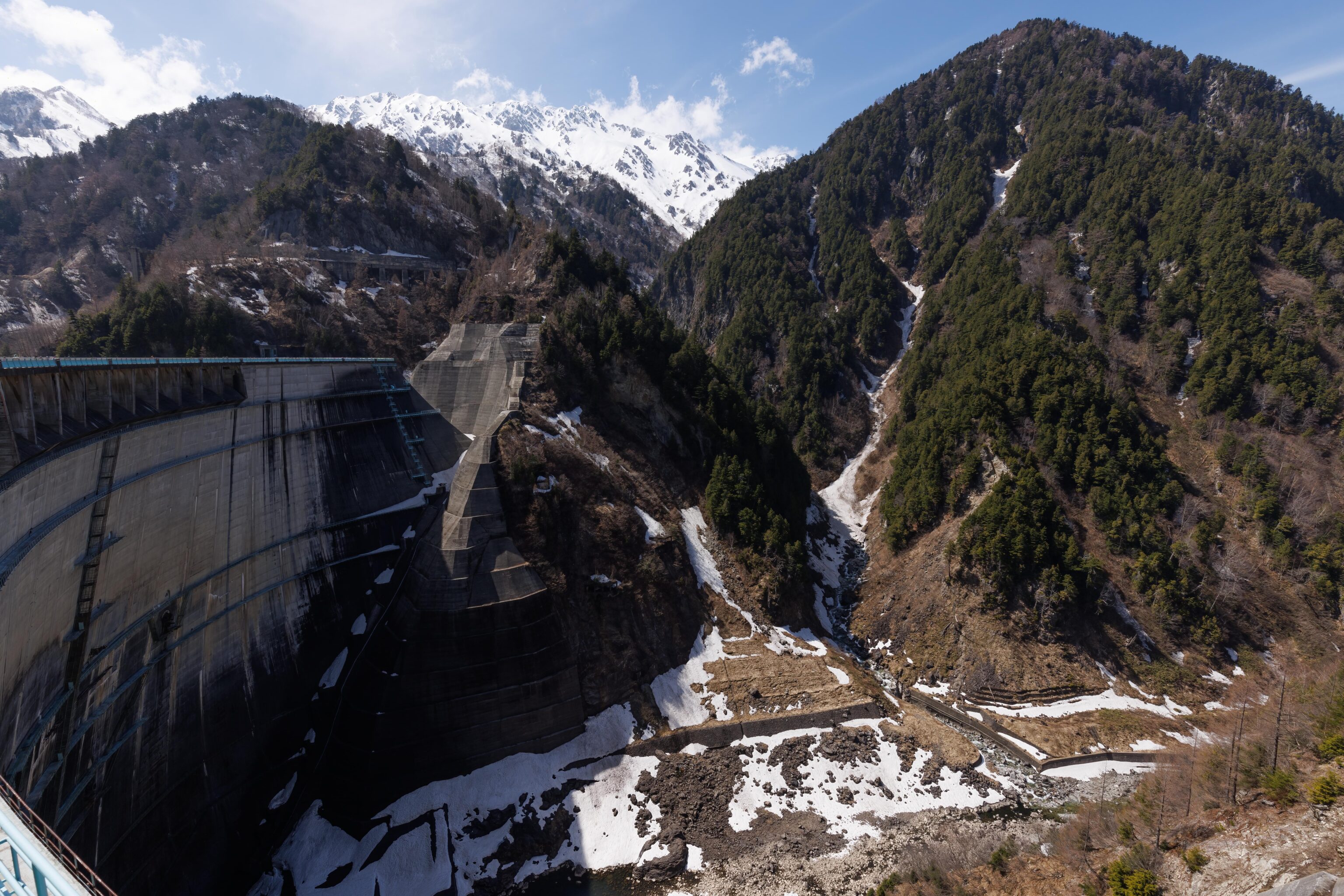
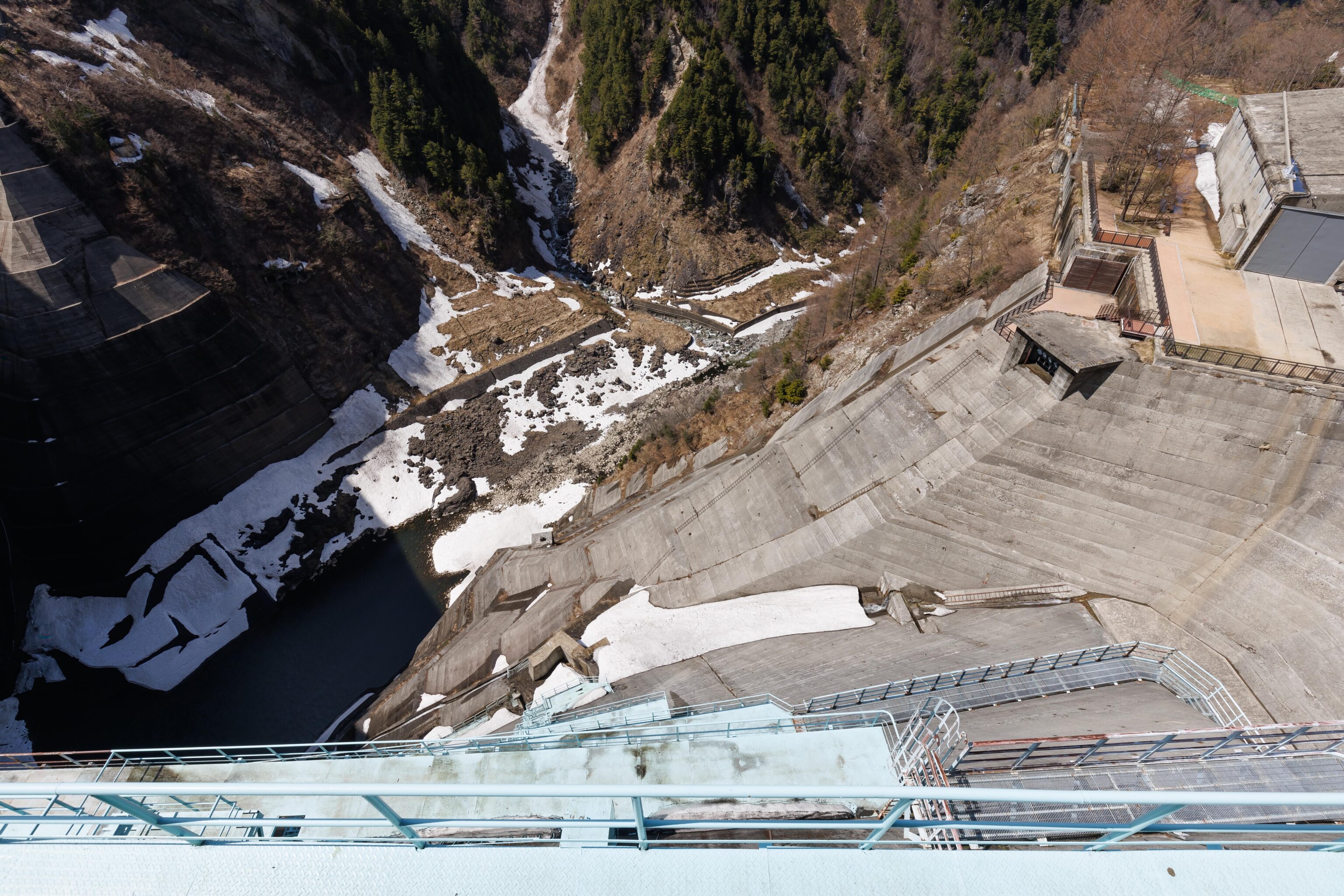
The Kurobe Dam is definitely a large structure with concrete everywhere, including up a bit on the sides of the adjacent mountains. There wasn’t much, if any, water being released at the time.
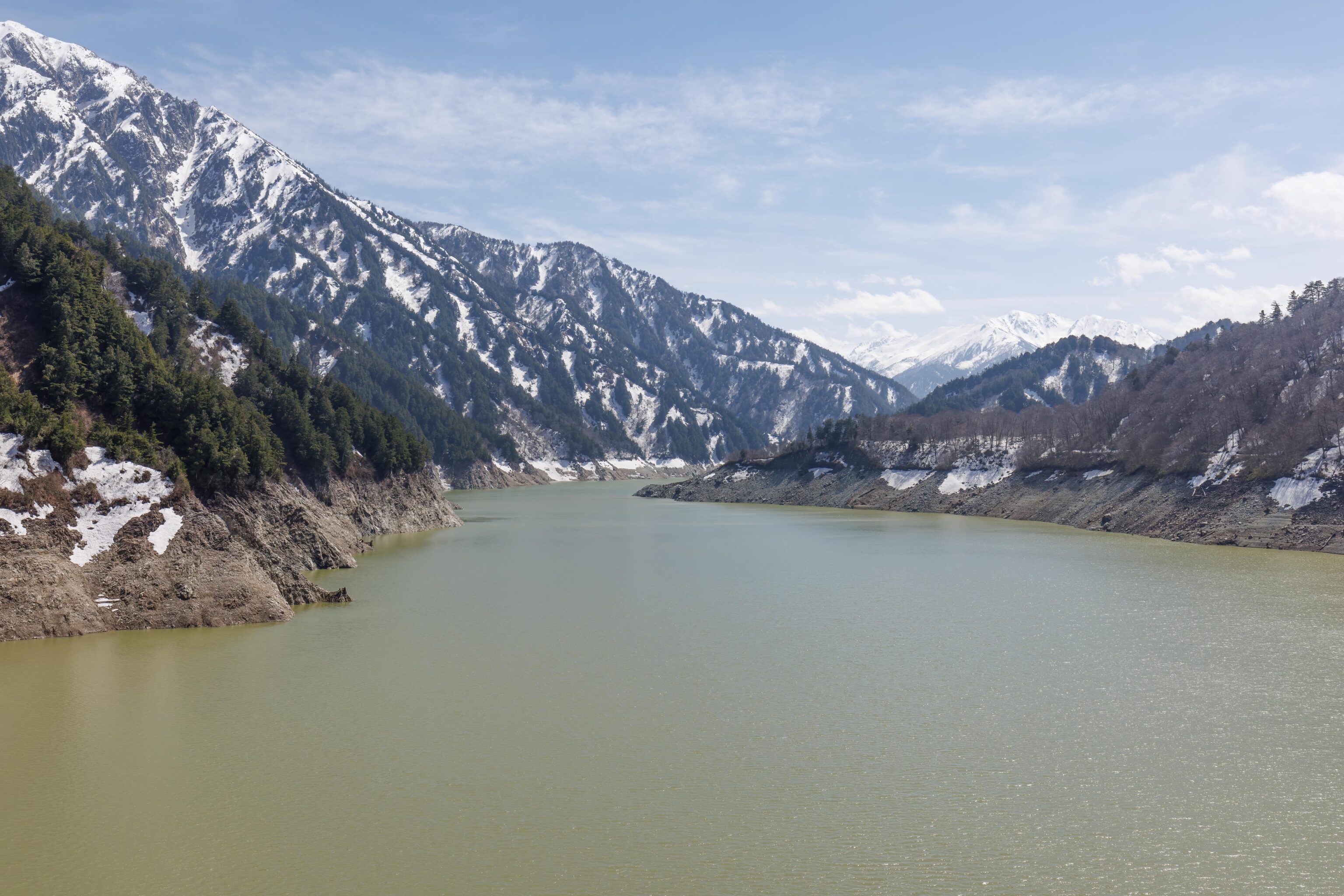
A beautiful view of the lake behind the dam from near the midpoint.
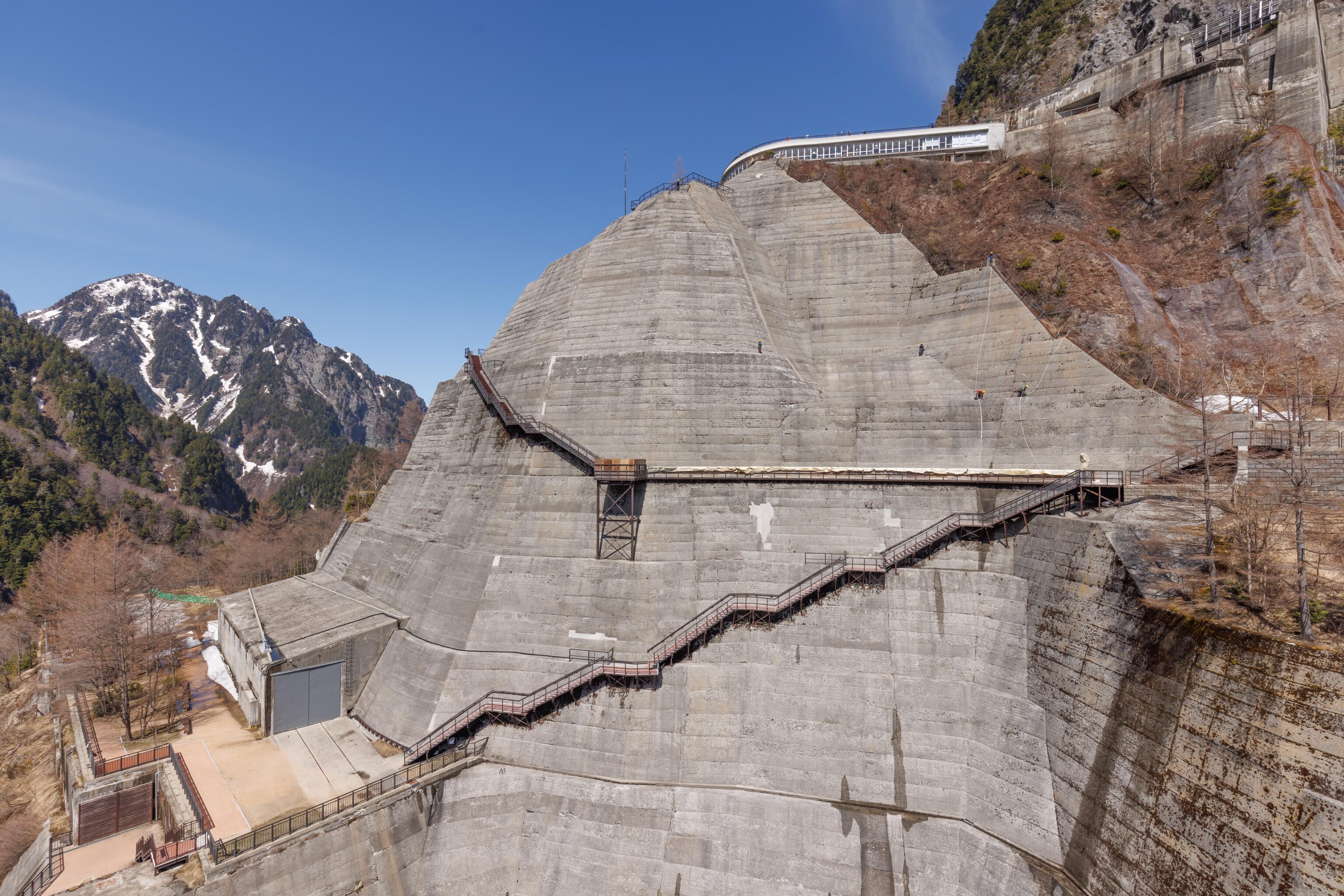
There was some maintenance going on during our visit.
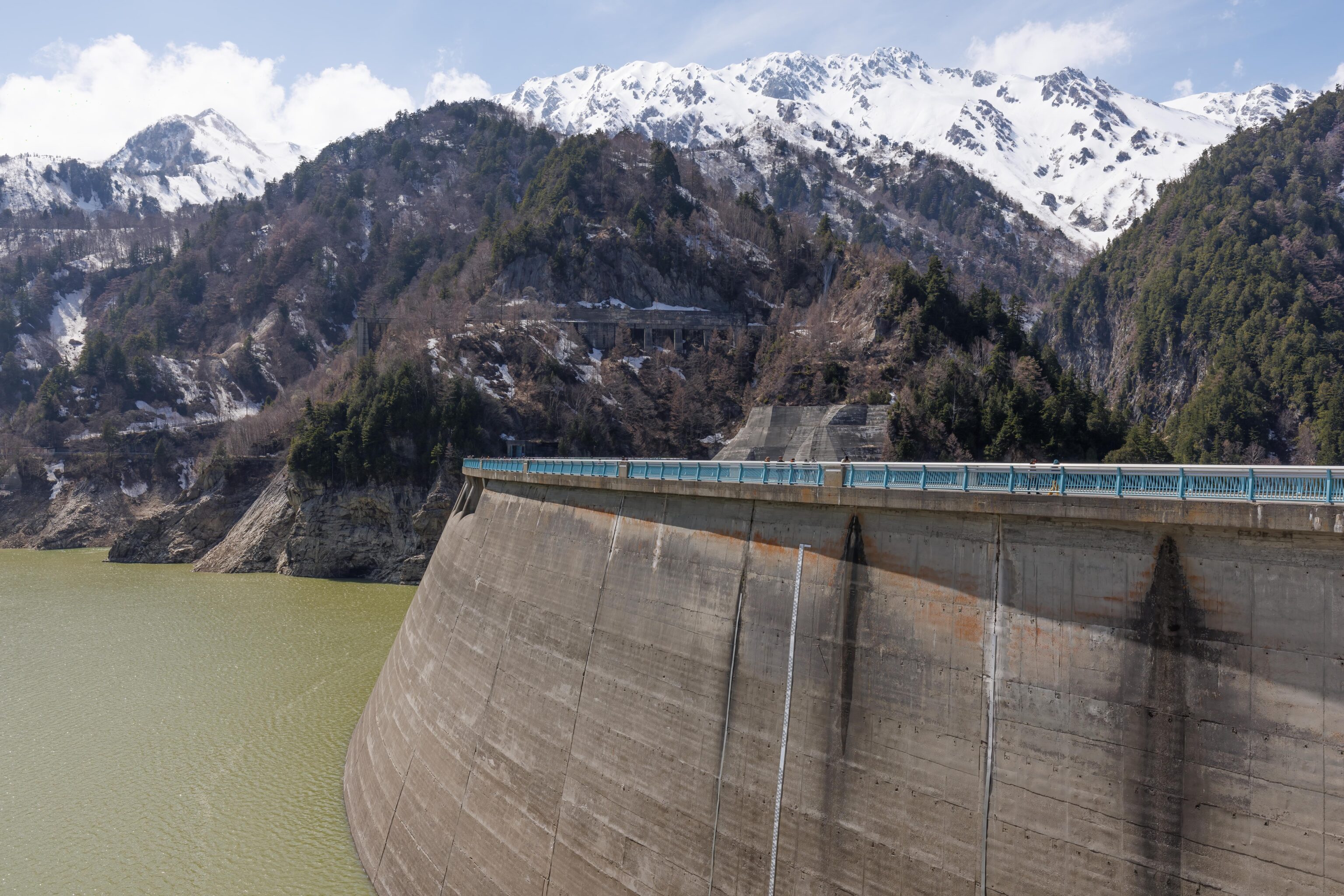
Upon reaching the other side, we took a brief break to eat some snacks that we had bought at Murodo Station. We came from somewhere up there in the background! It does seem like the wide mountain should be Tateyama and the peak to the left should be Mount Jodo, opposite of what we saw from the other side.
After our brief break, we headed into the mountain to the Kurobe Dam station where we took the Kanden Tunnel Electric Bus to Ogizawa. This route was formerly operated by a trolleybus, the second to last remaining trolleybus in Japan.
We ended our trip across the alpine route at Ogizawa where we boarded a conventional bus to get to the Shinano-Omachi JR station.
